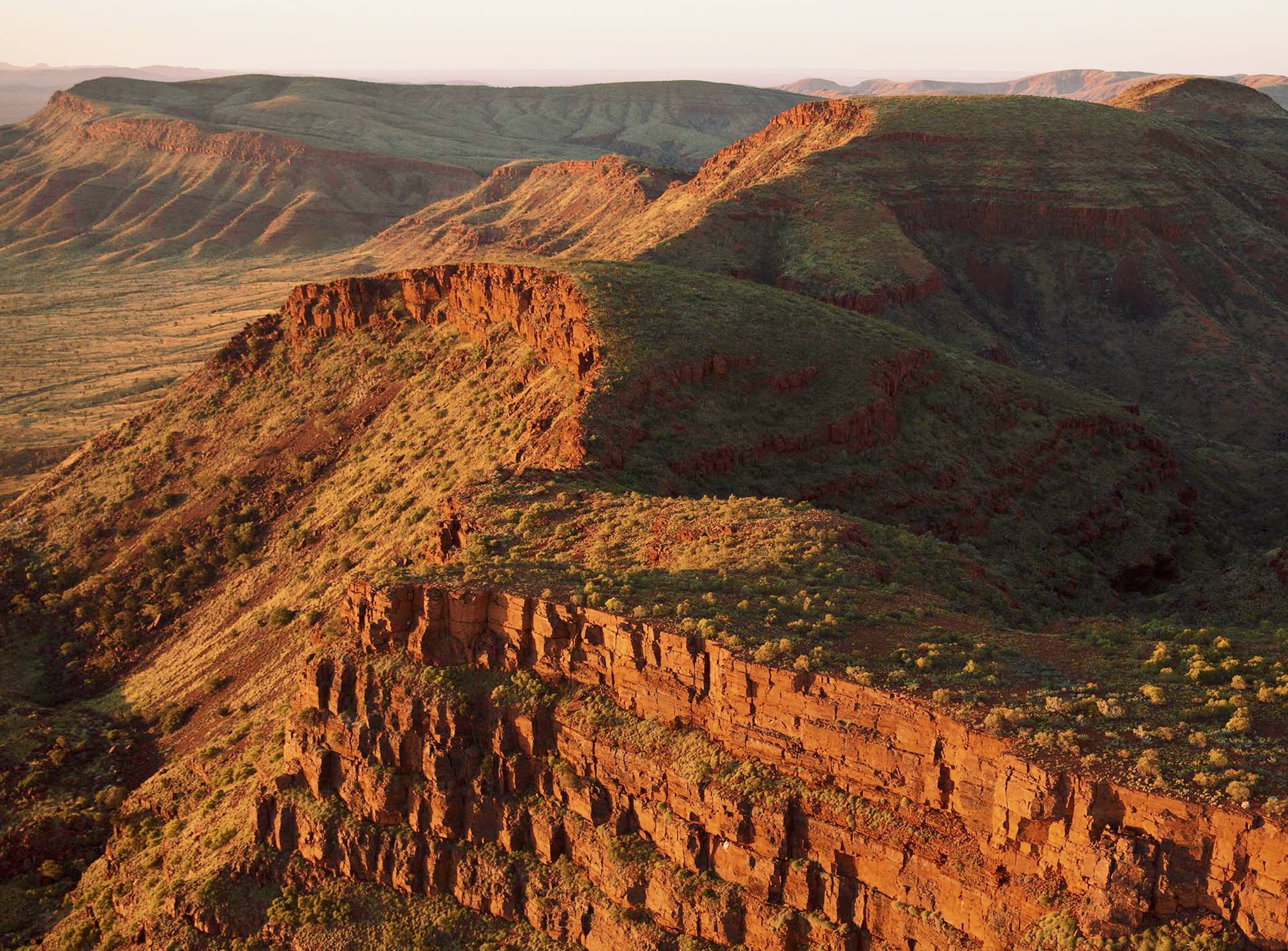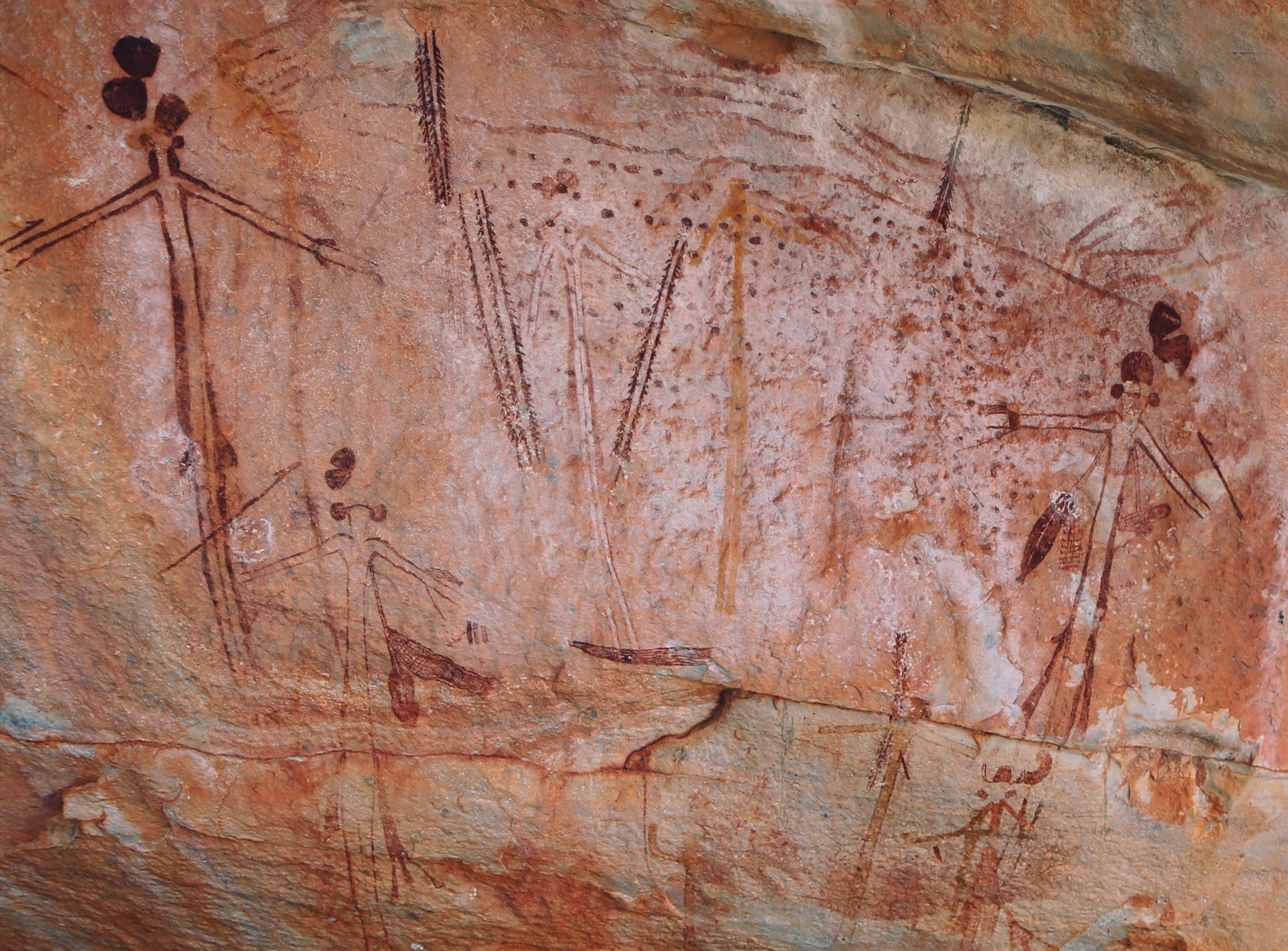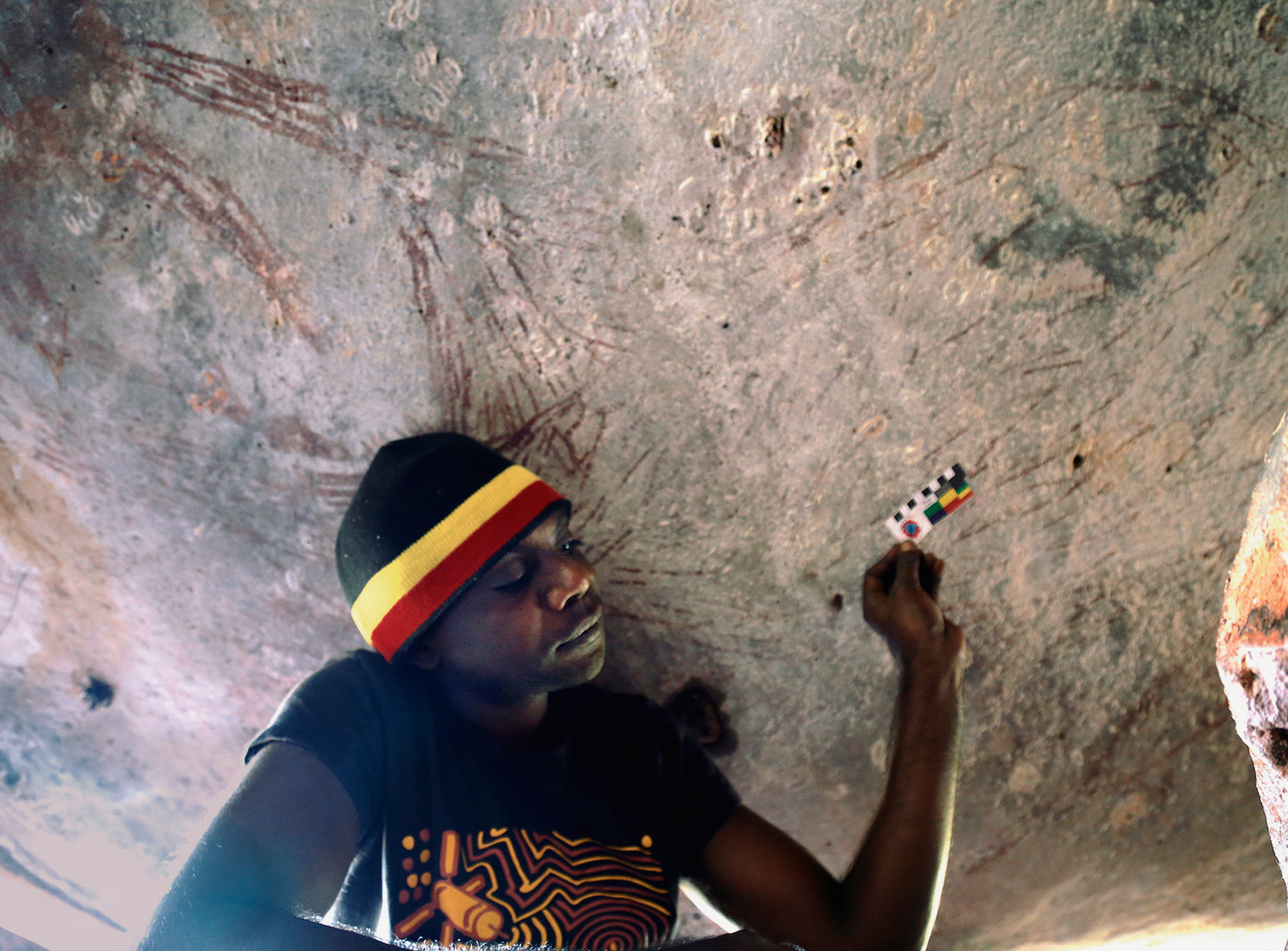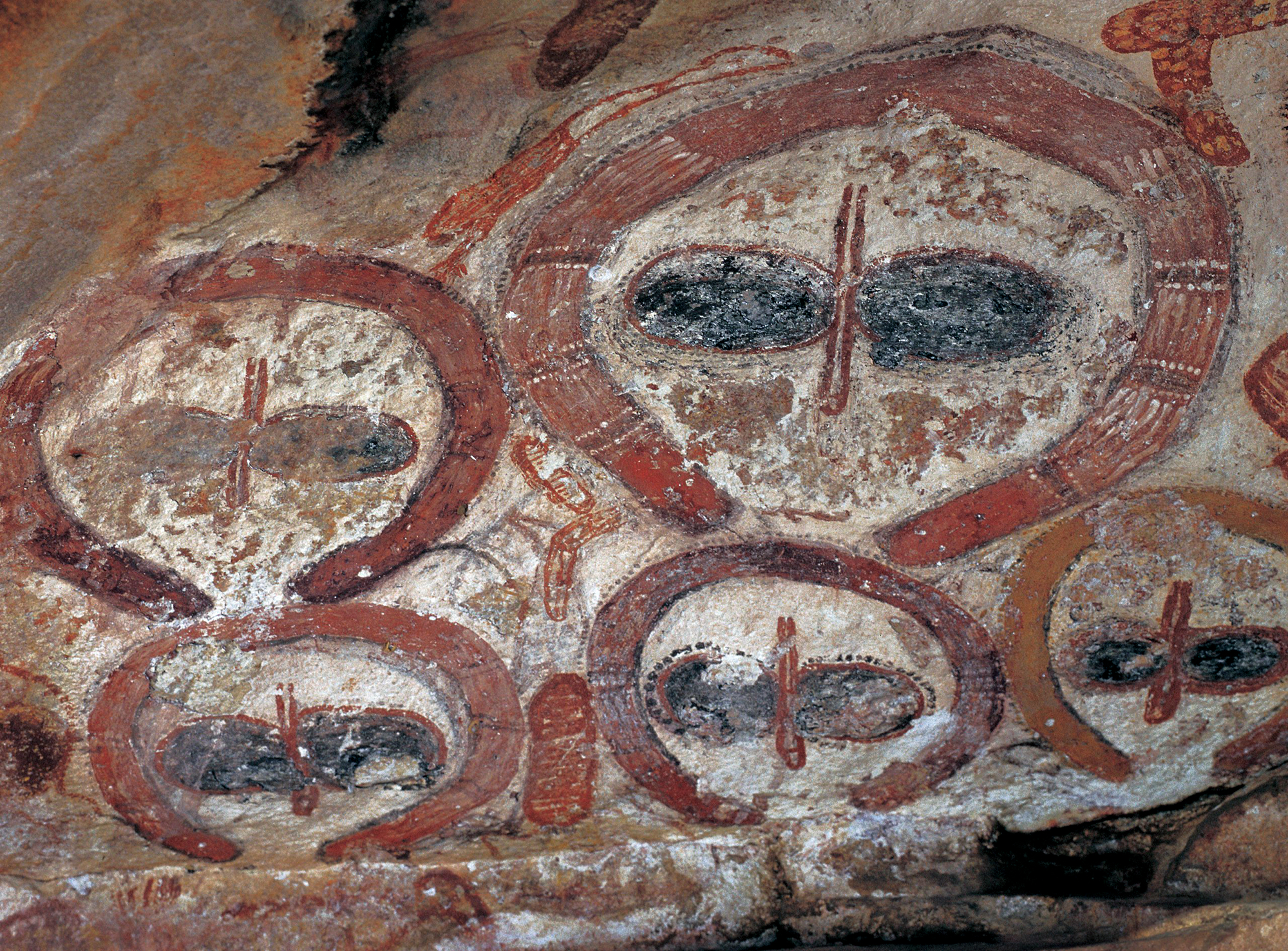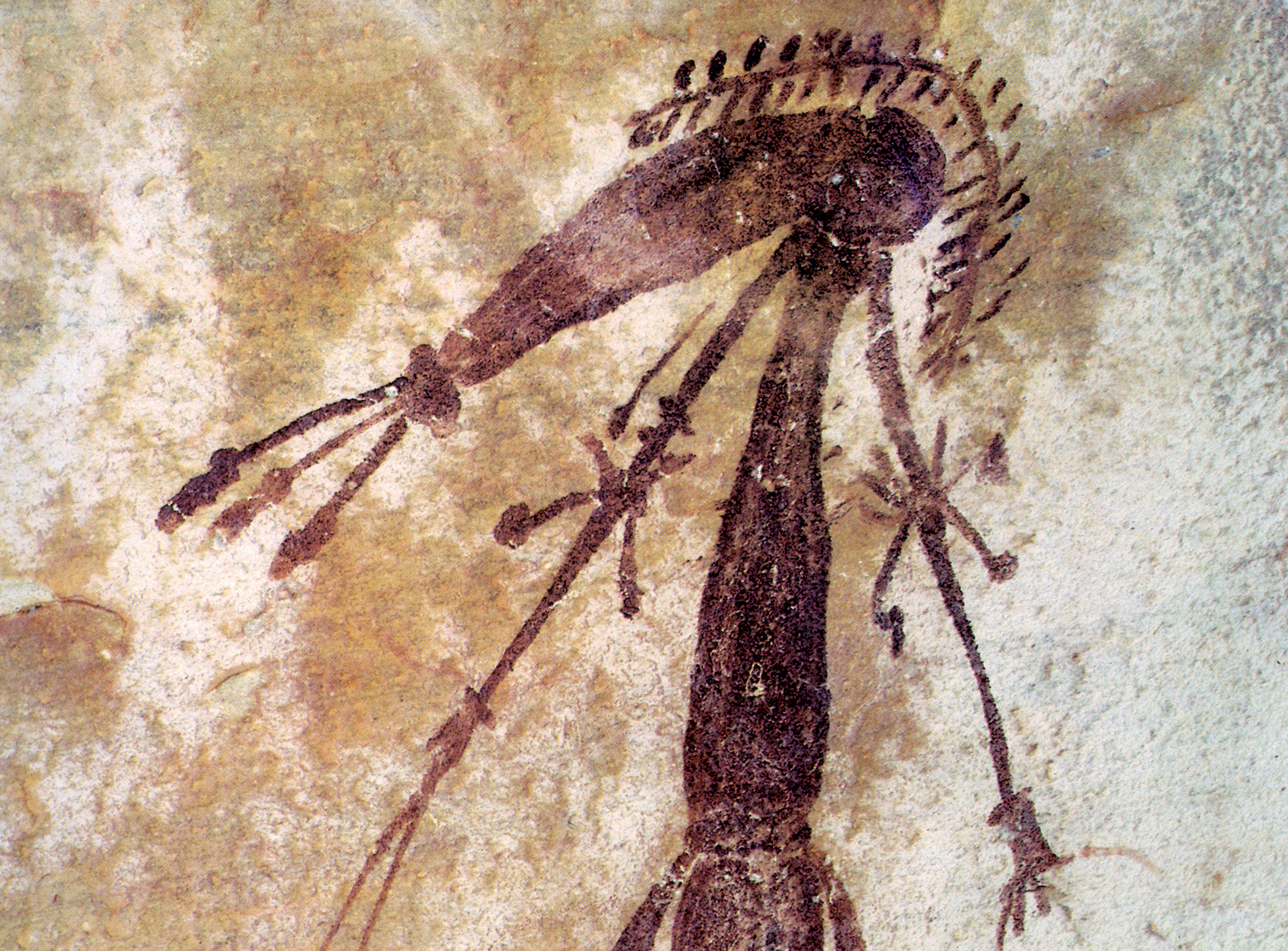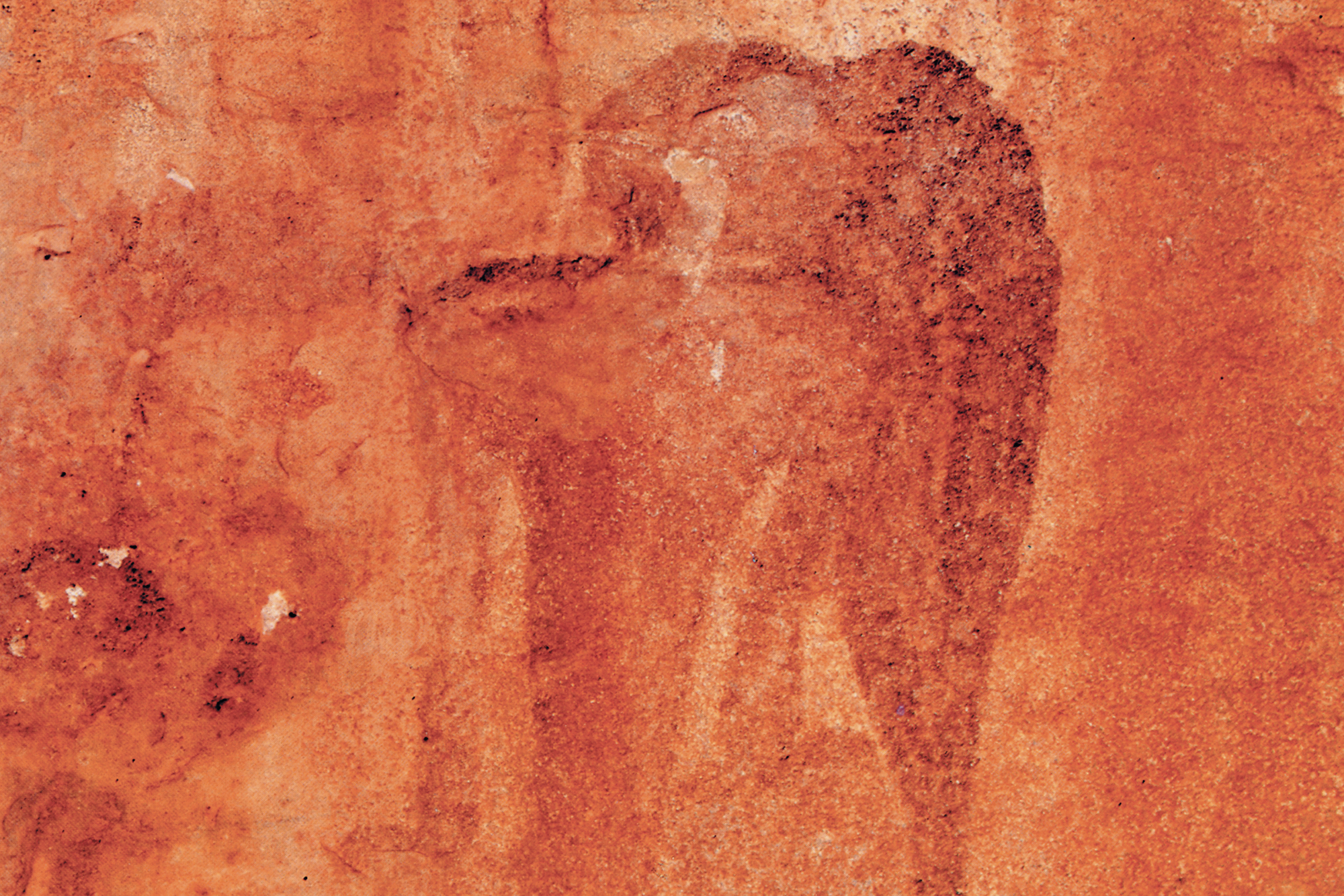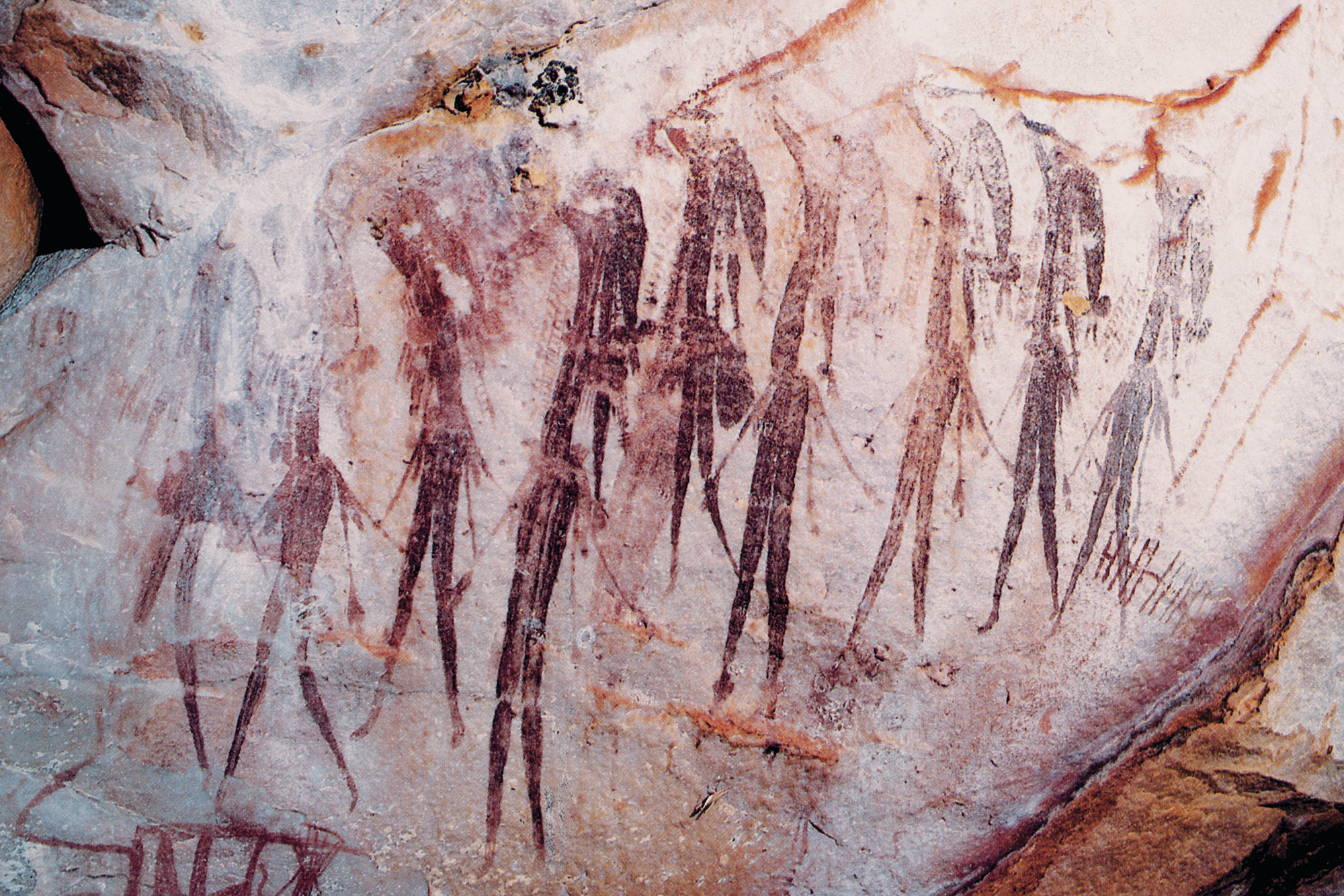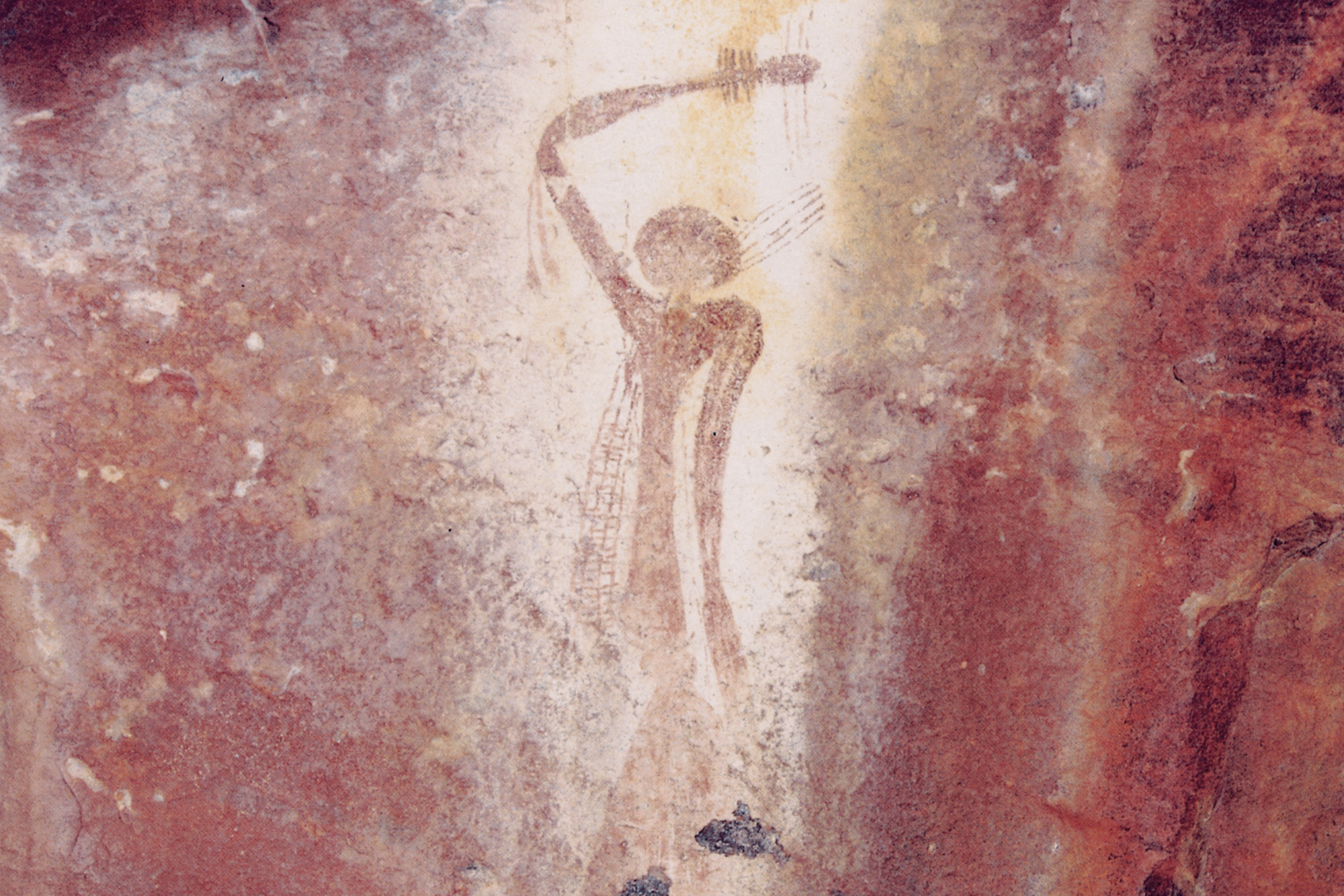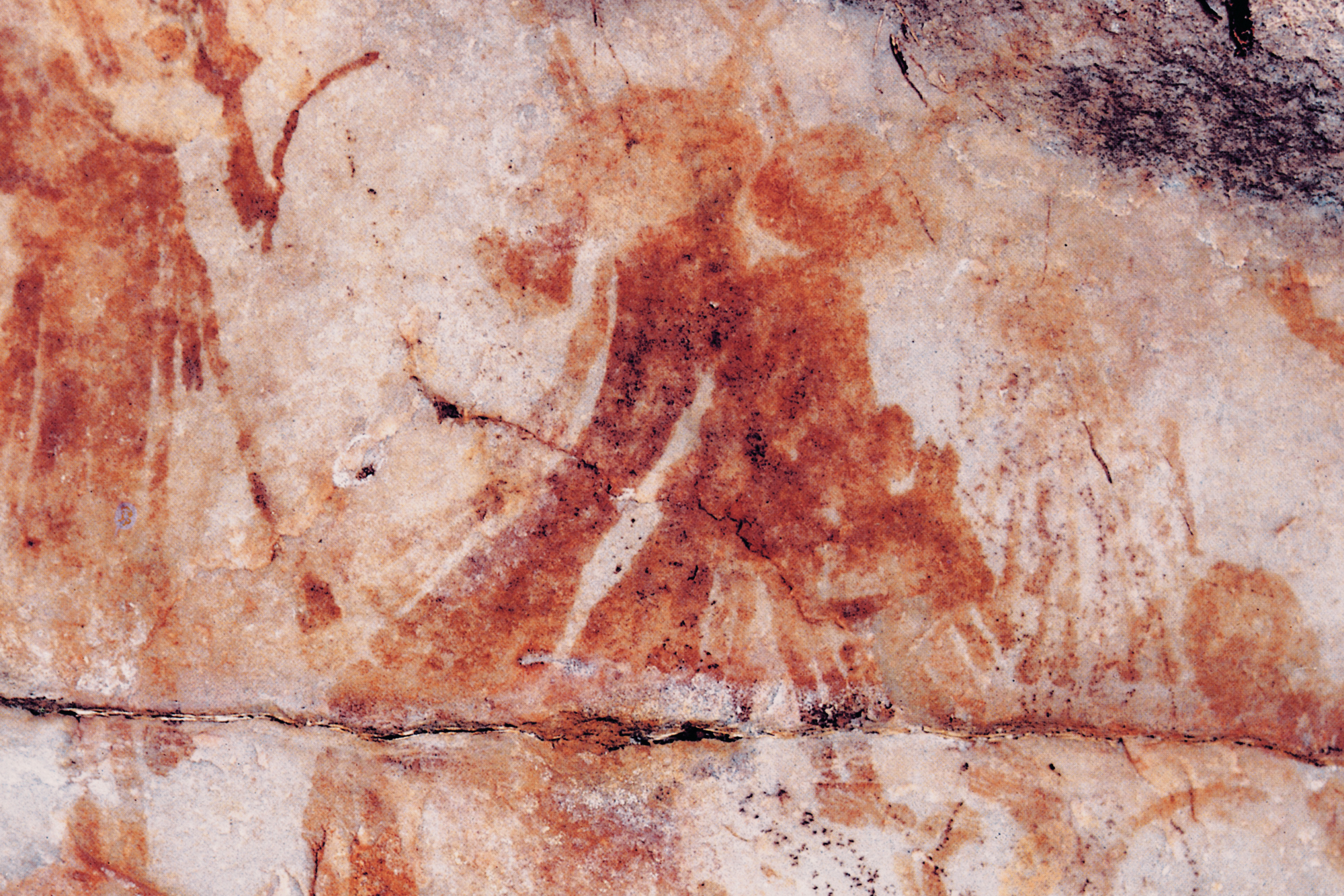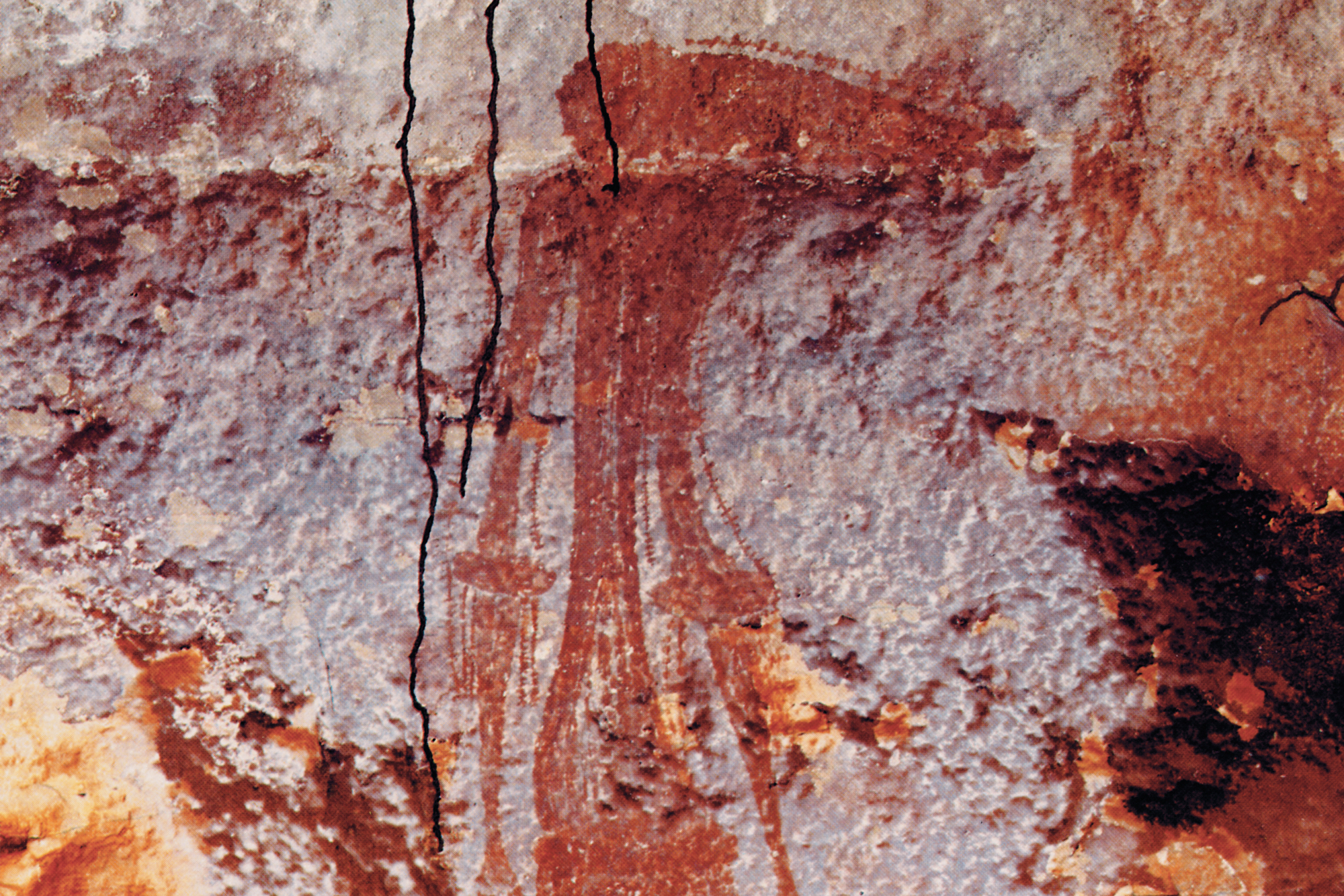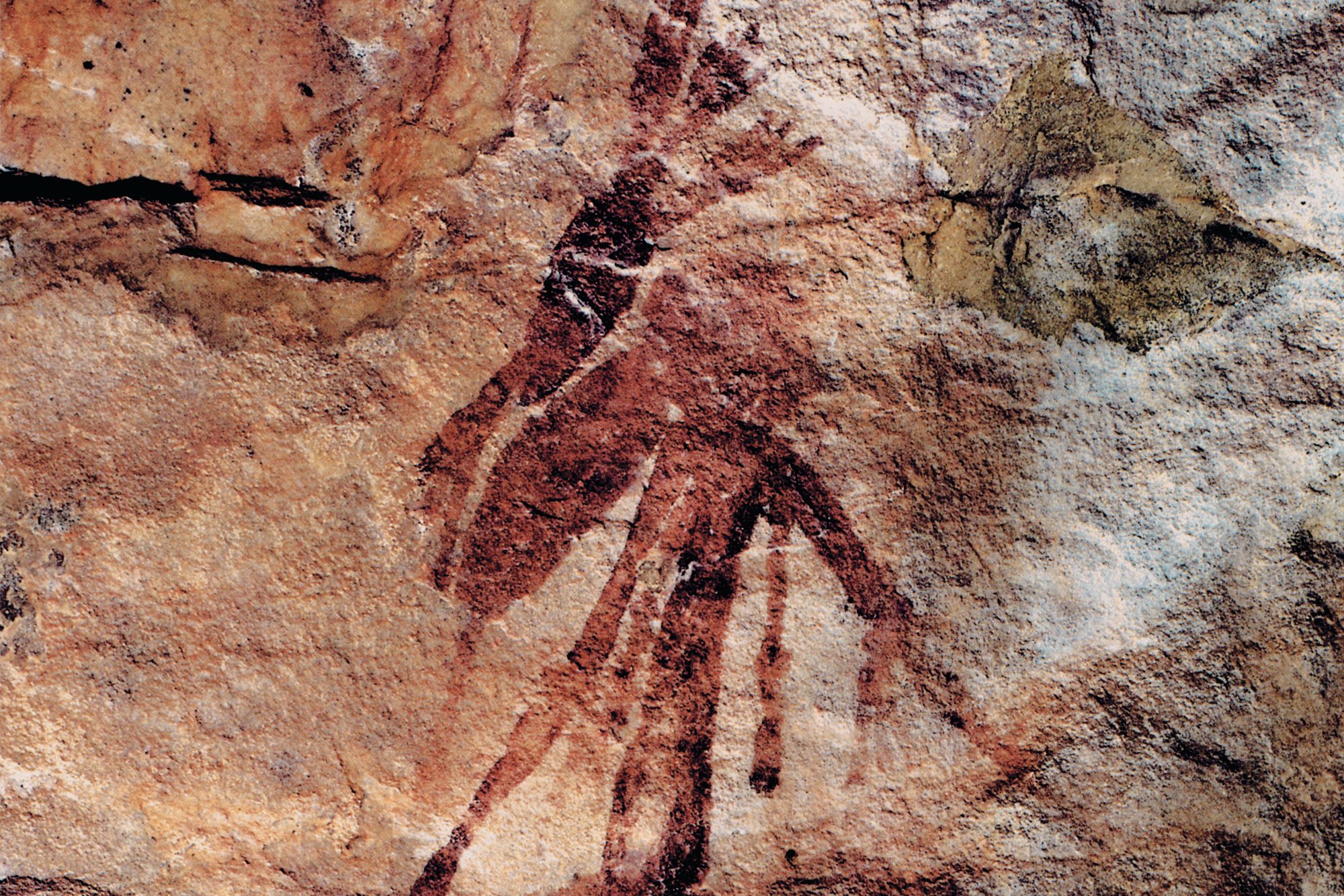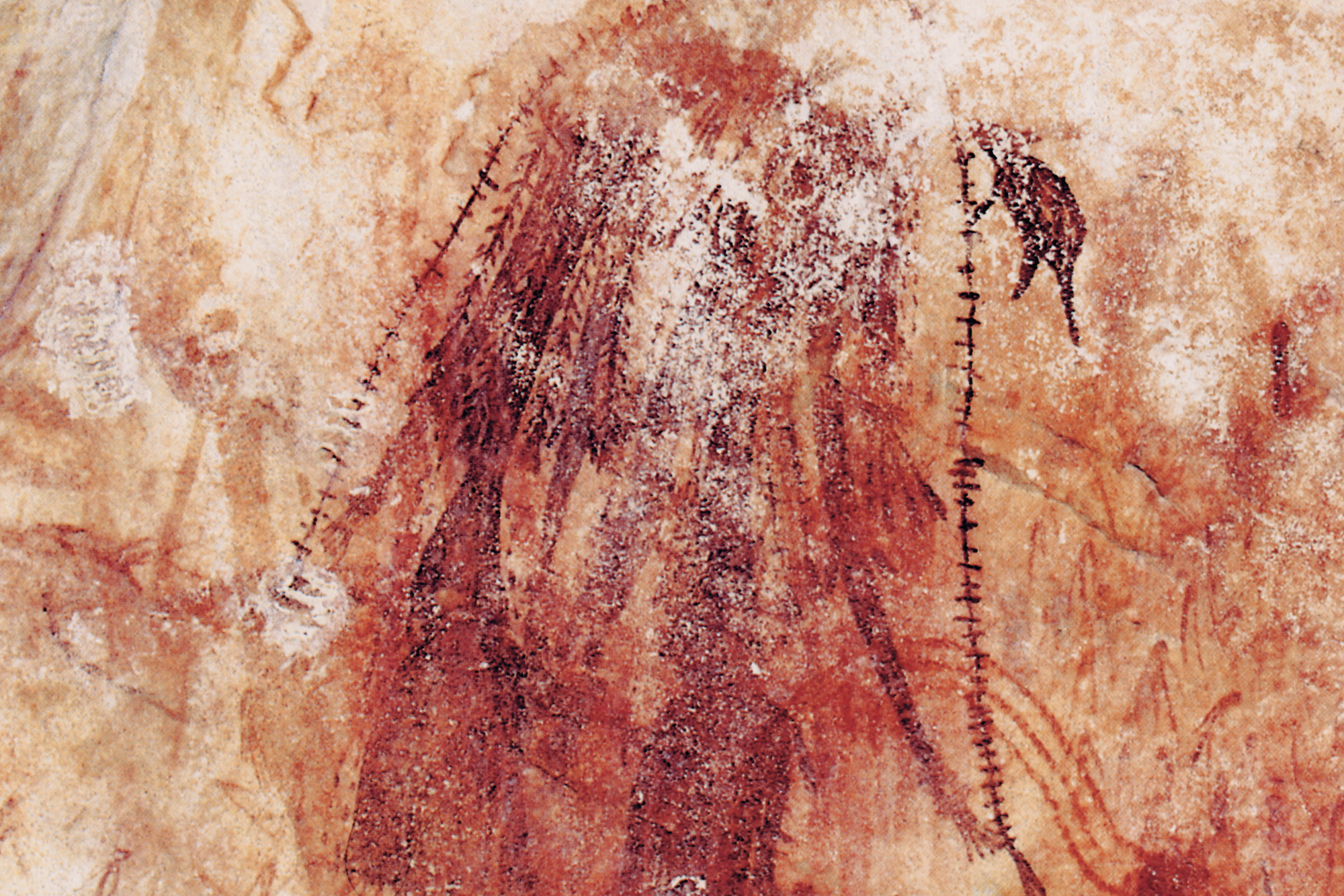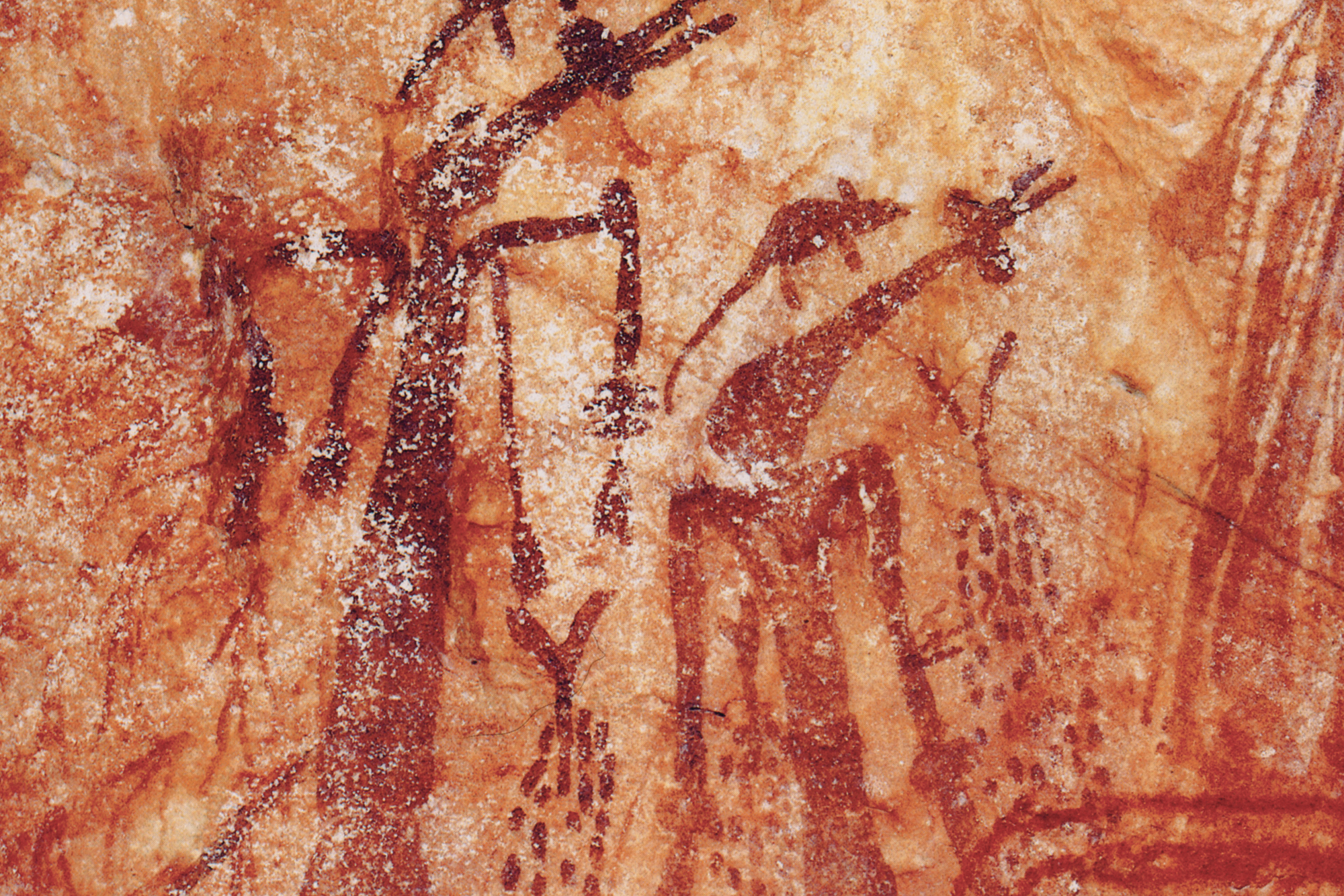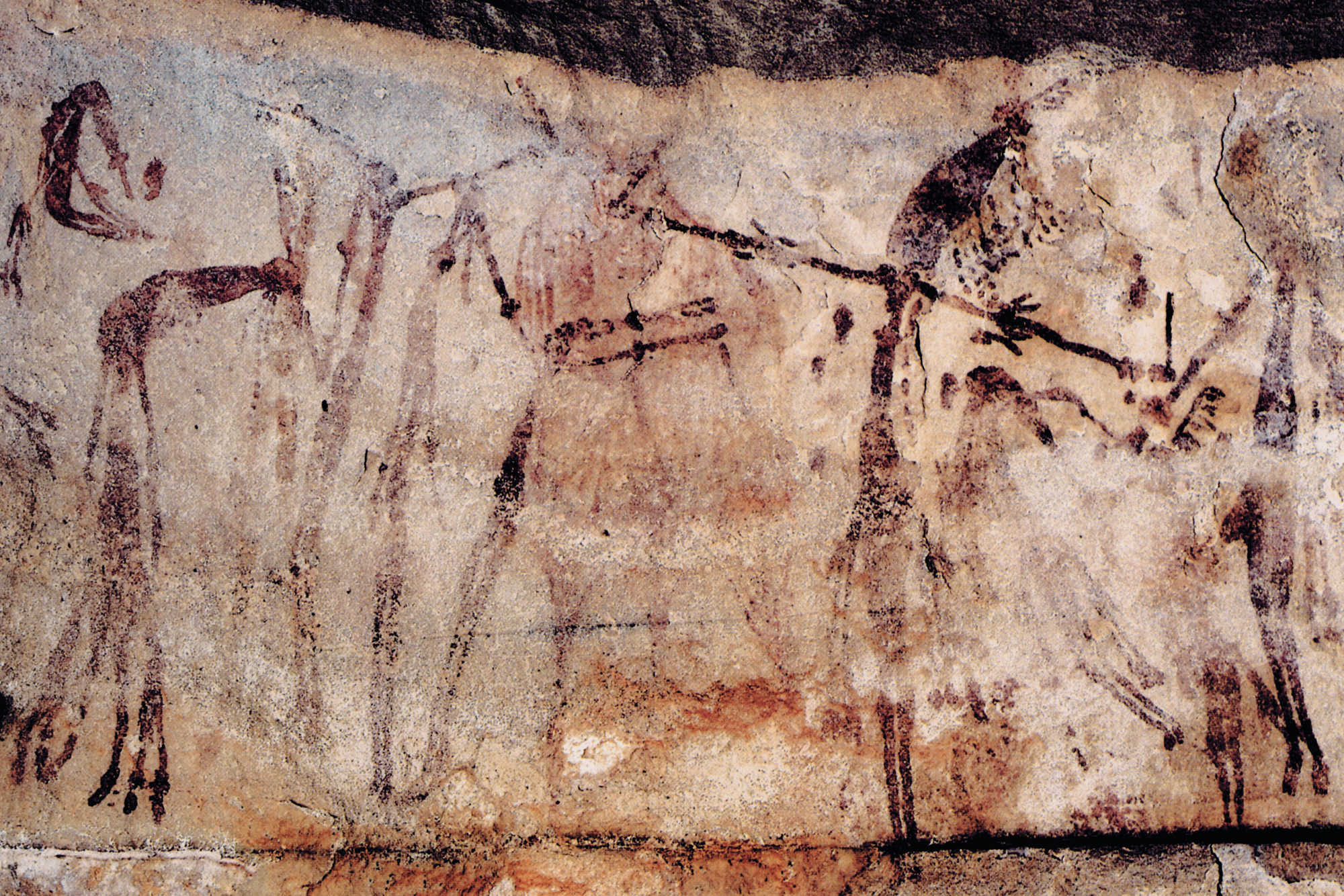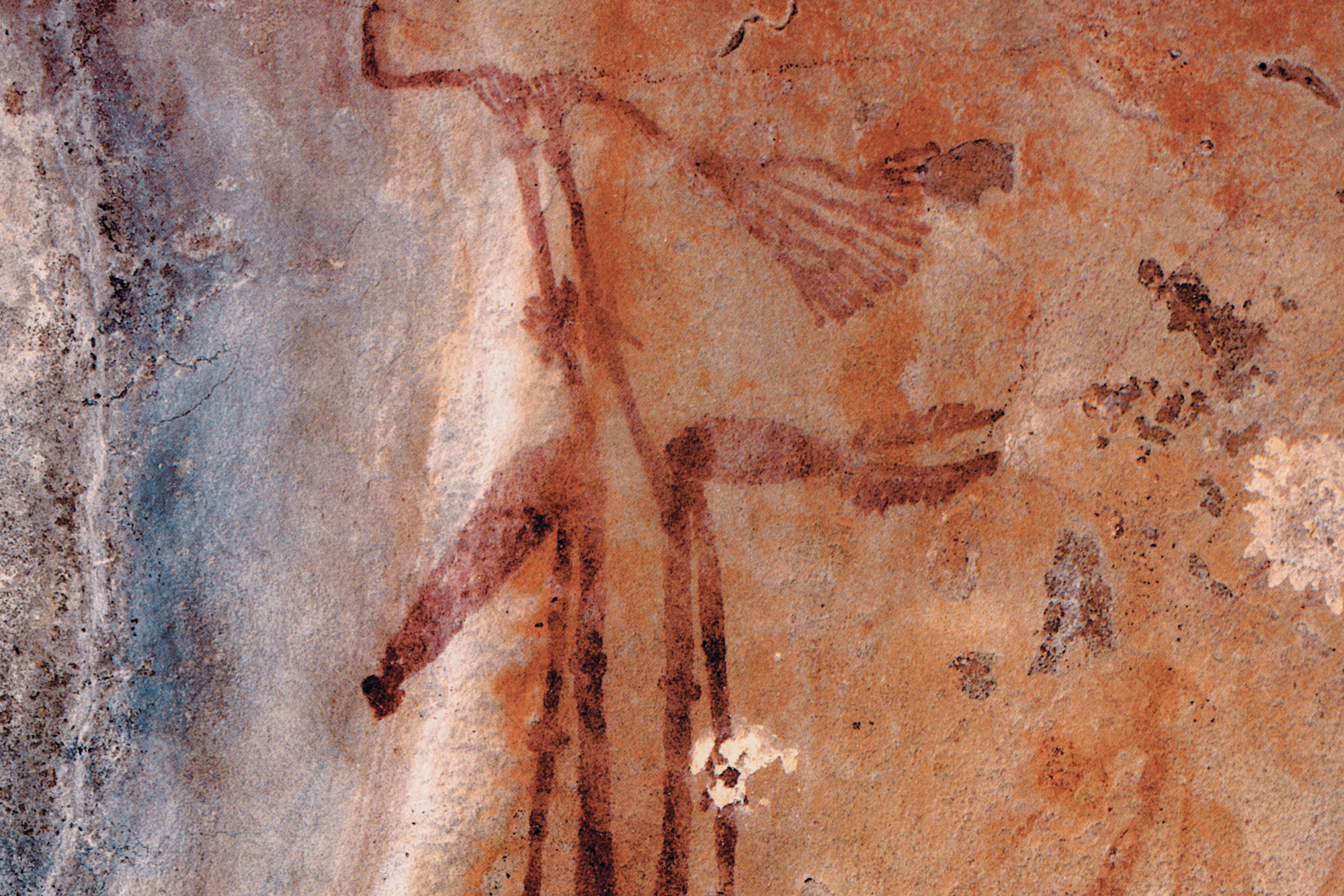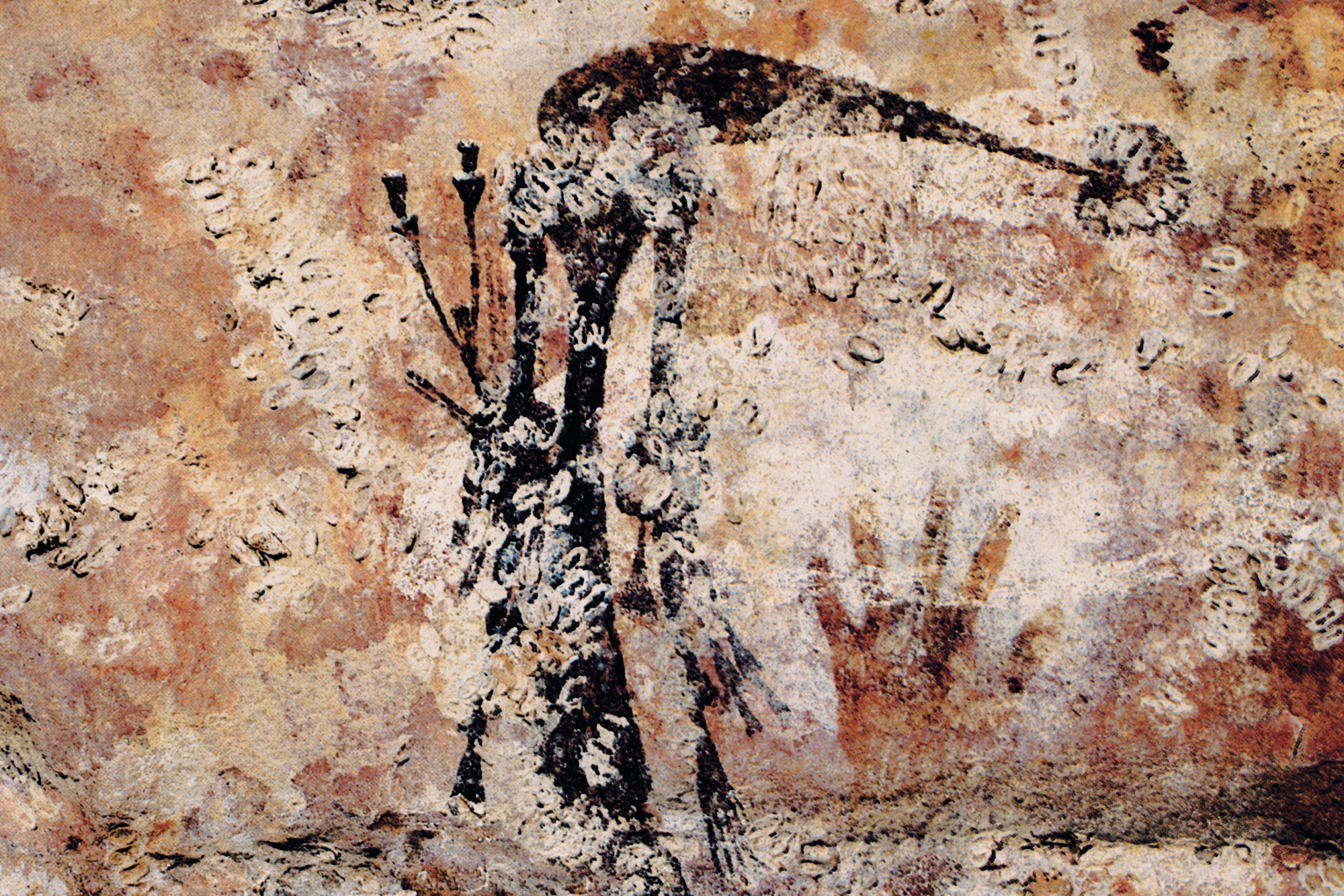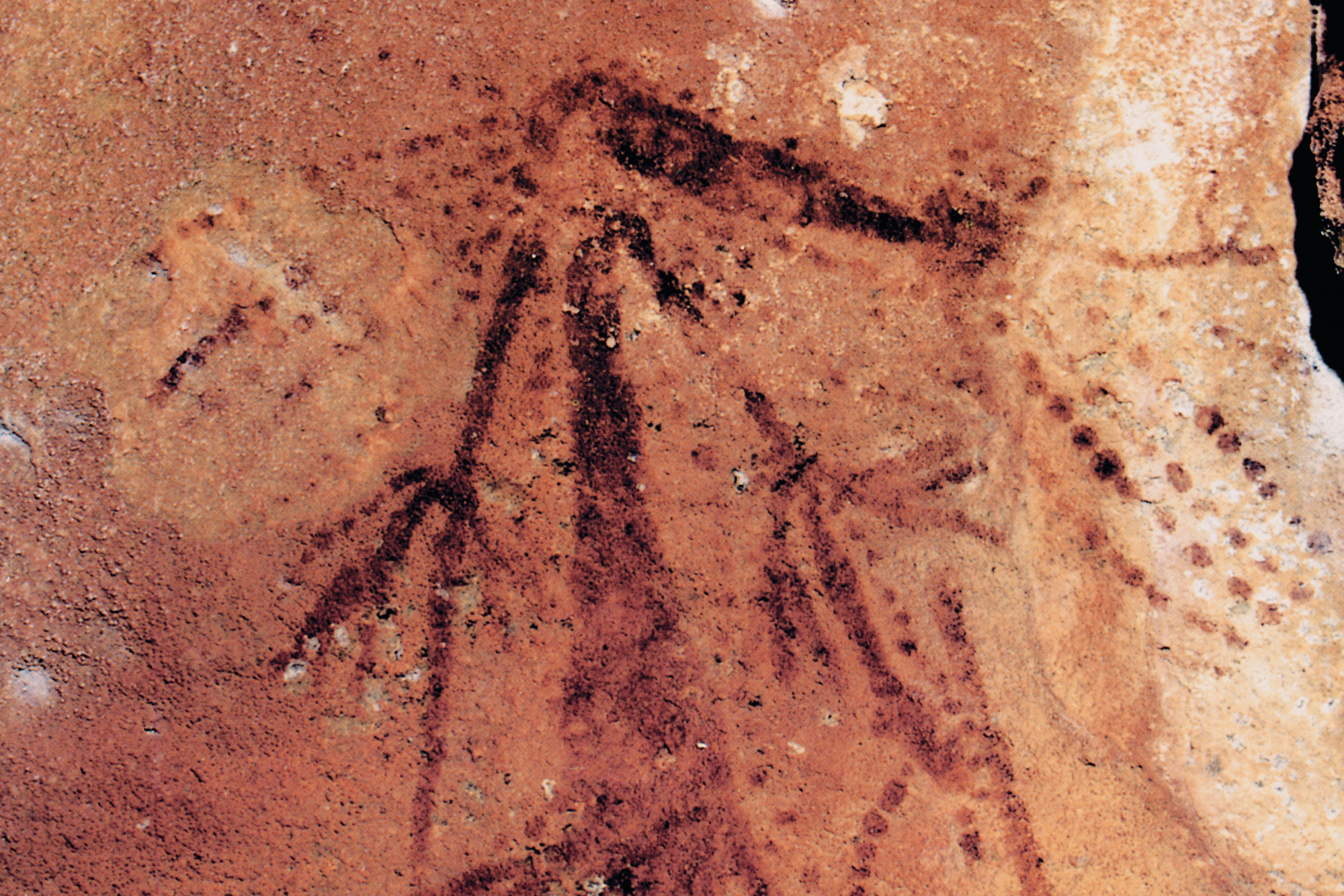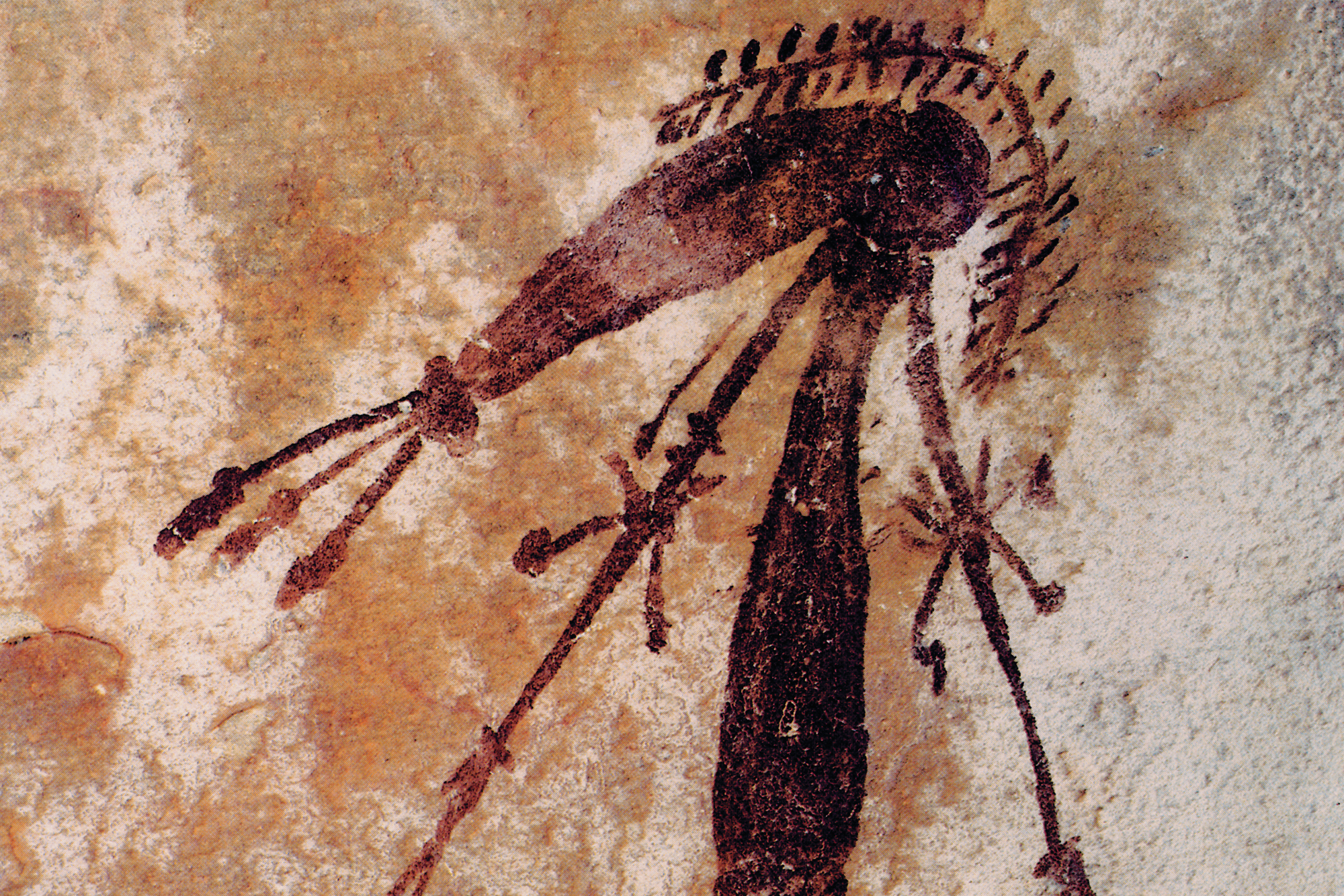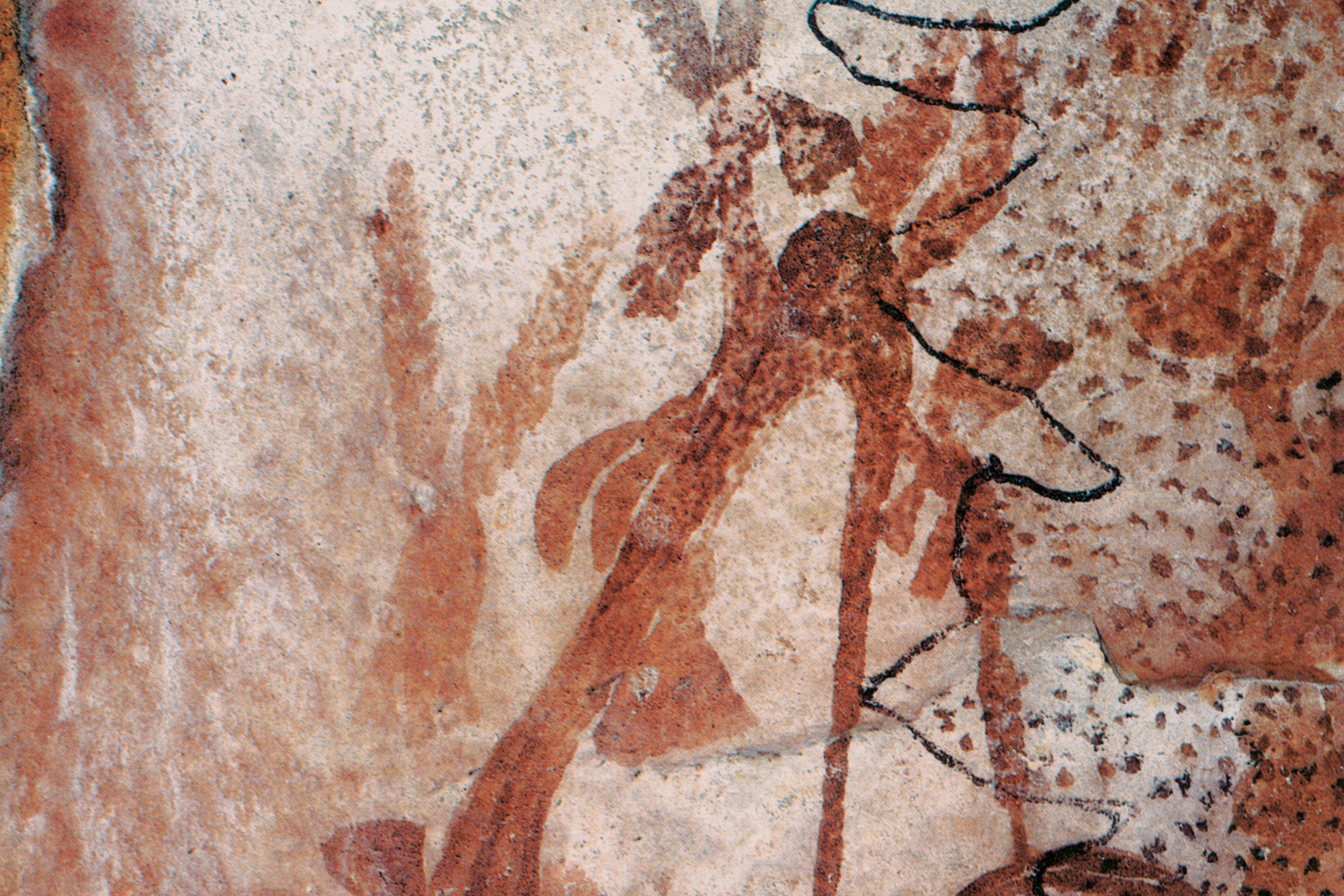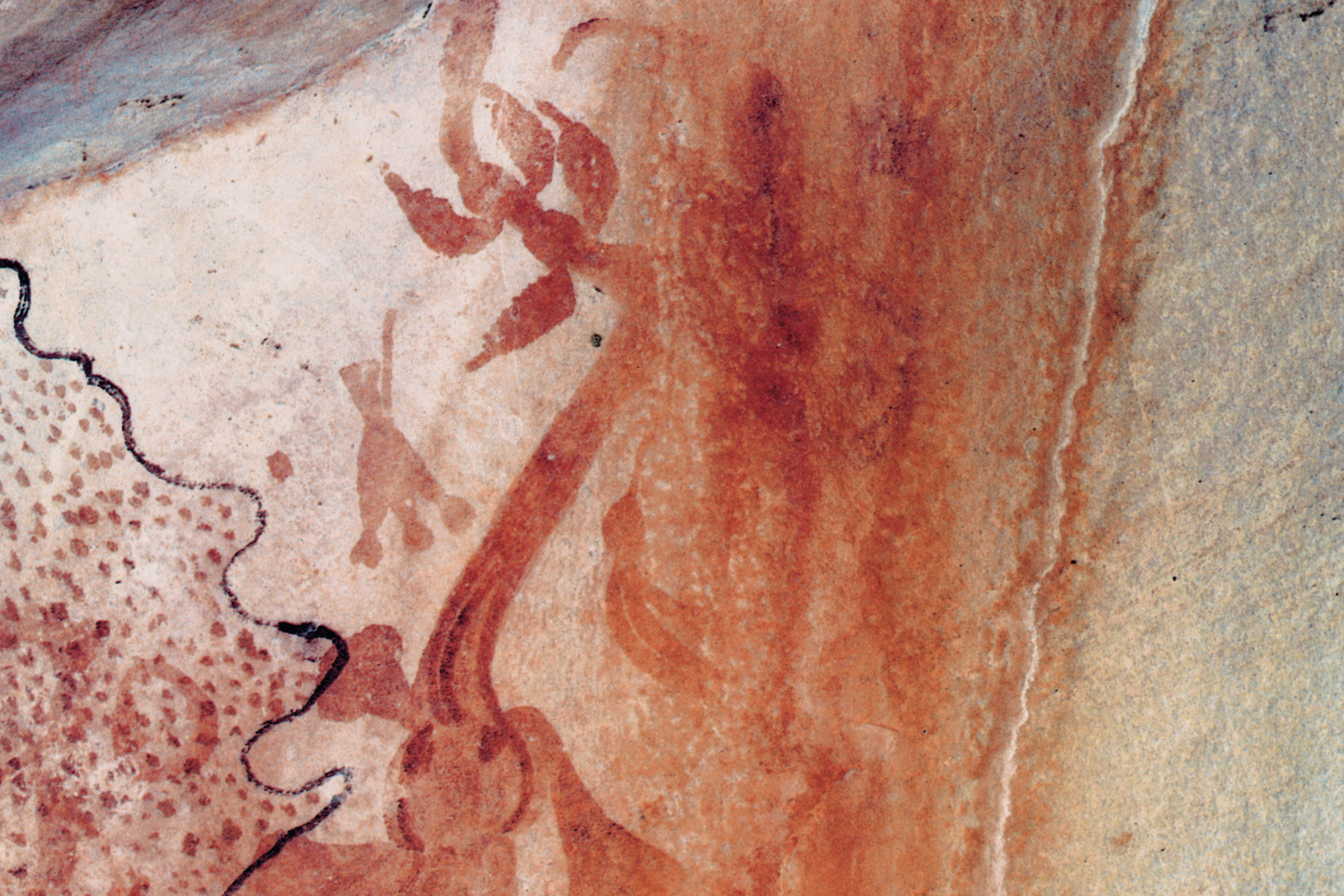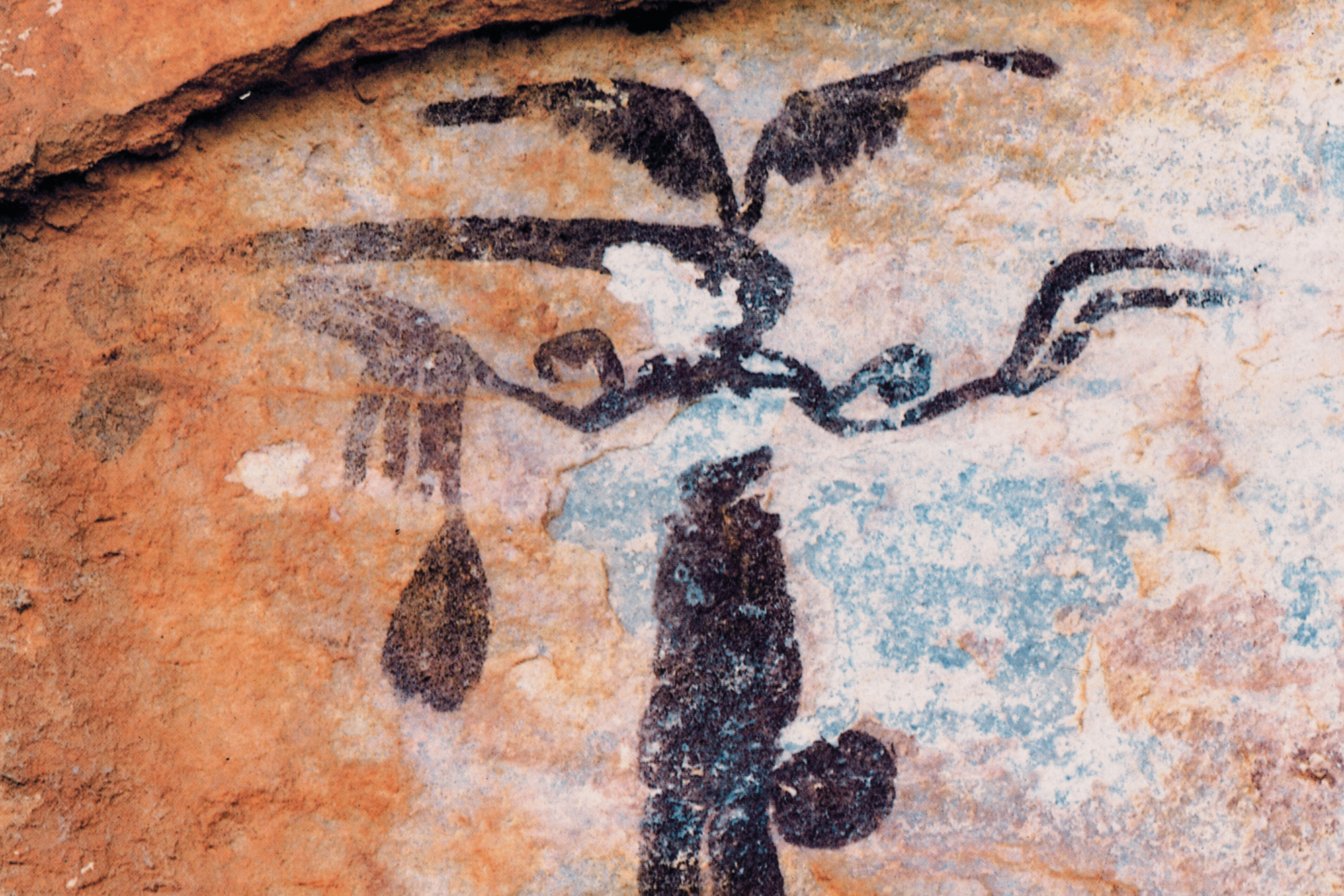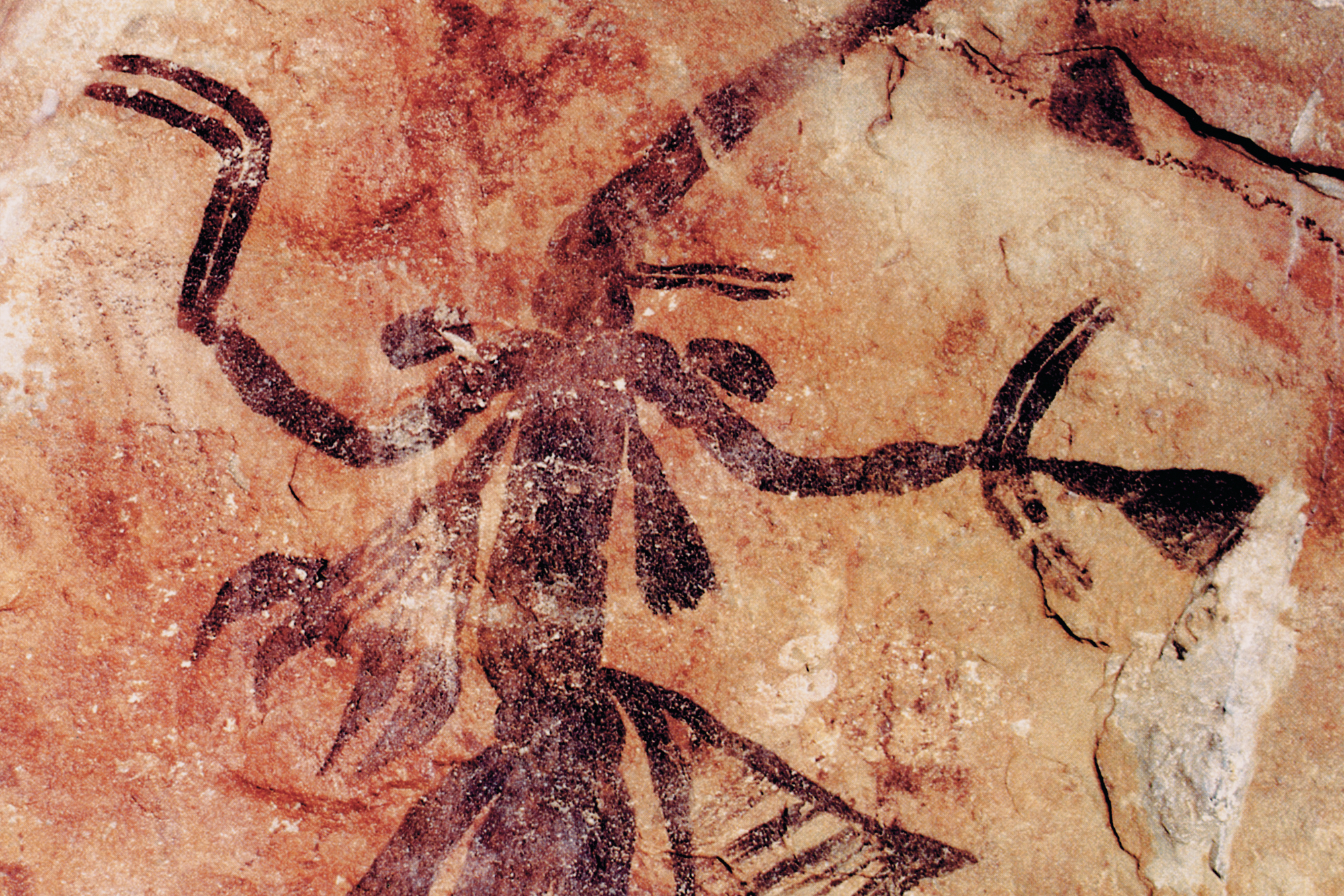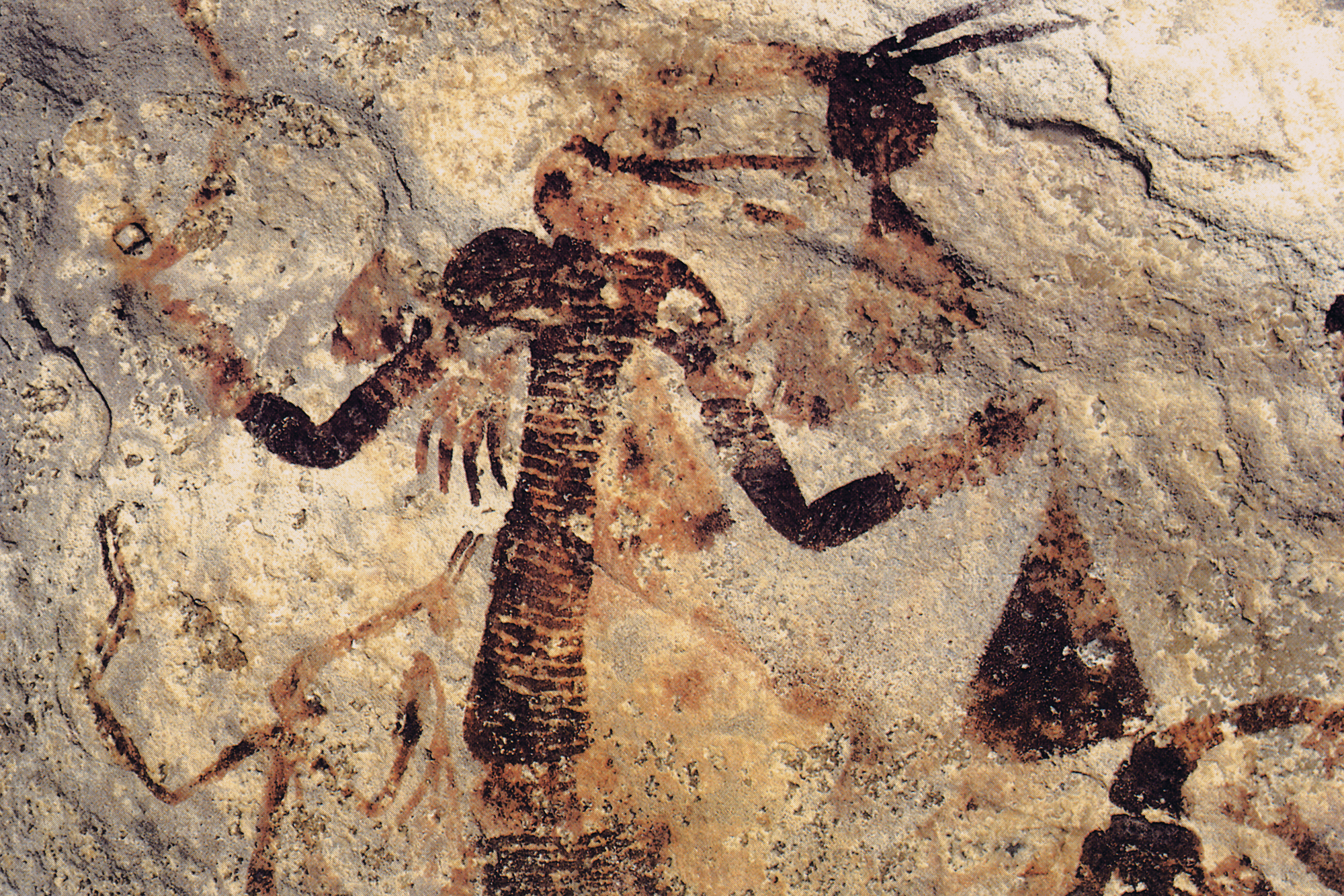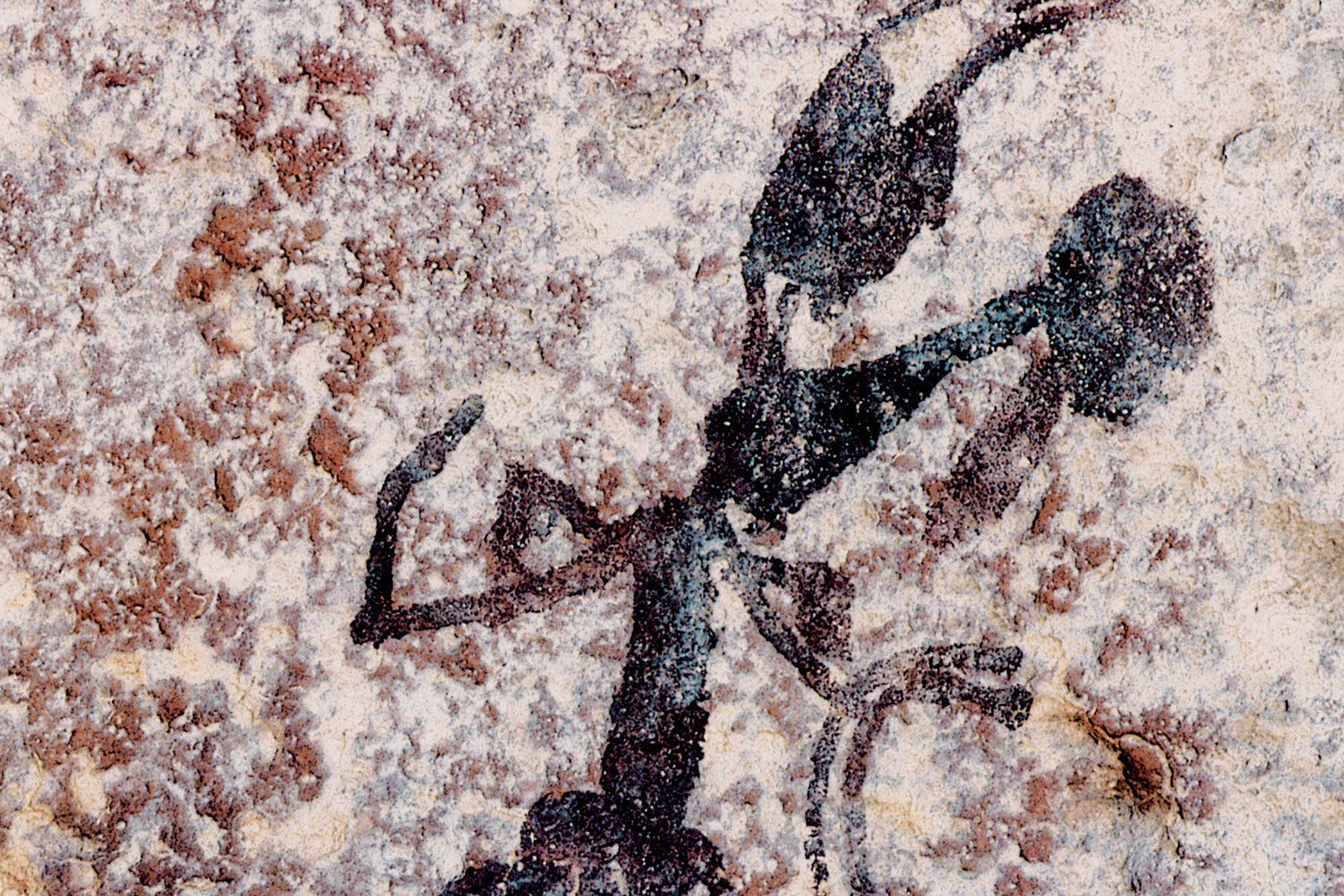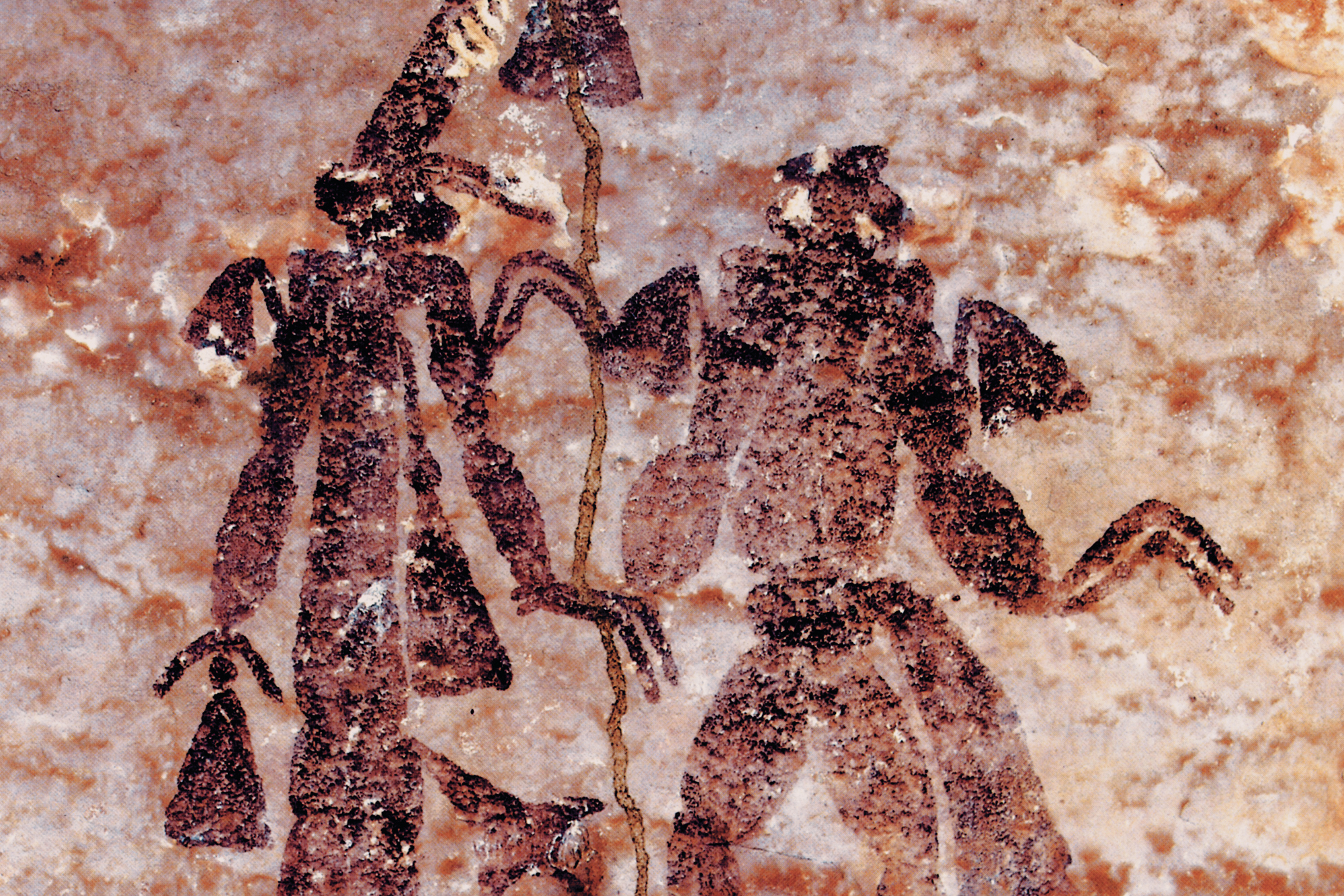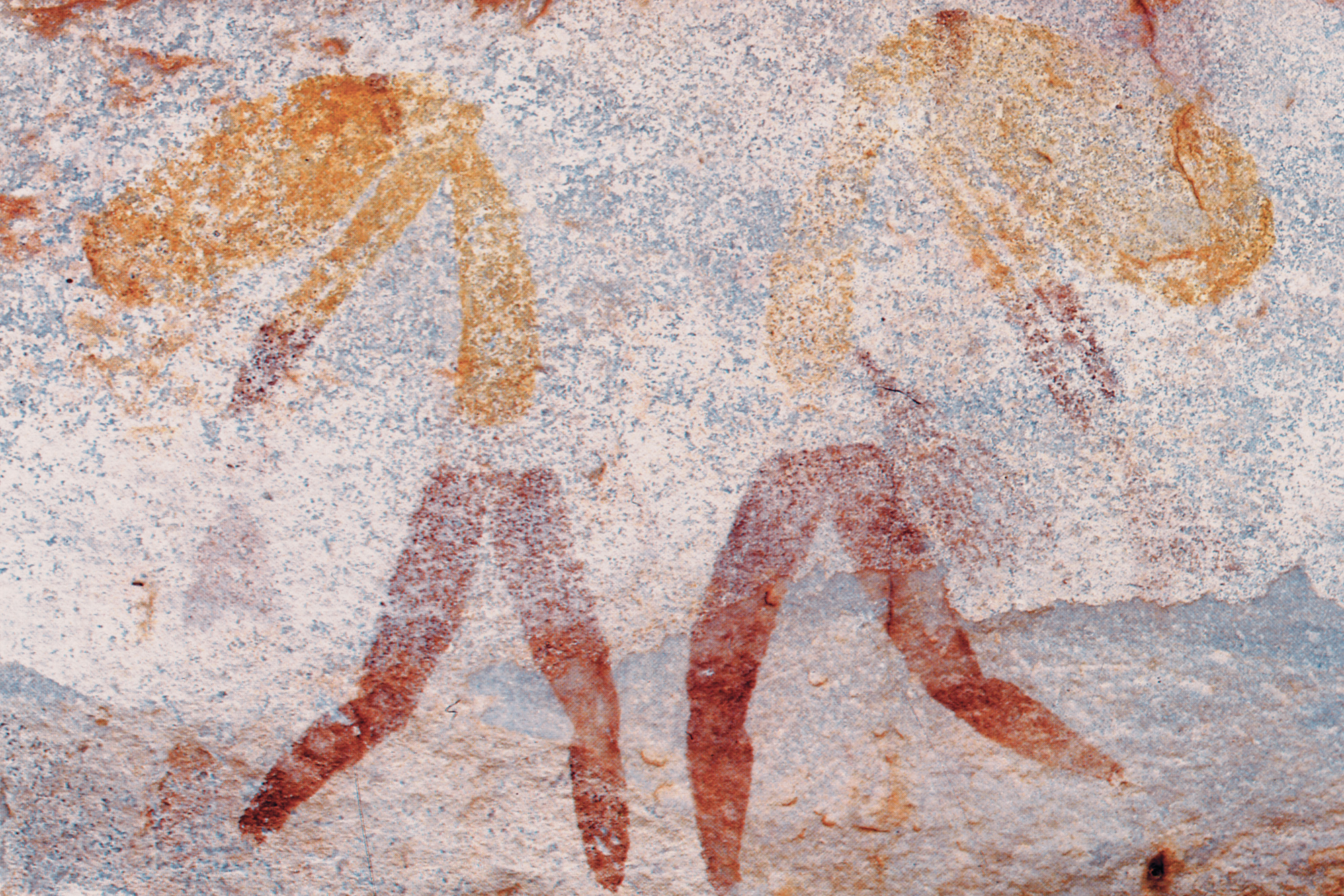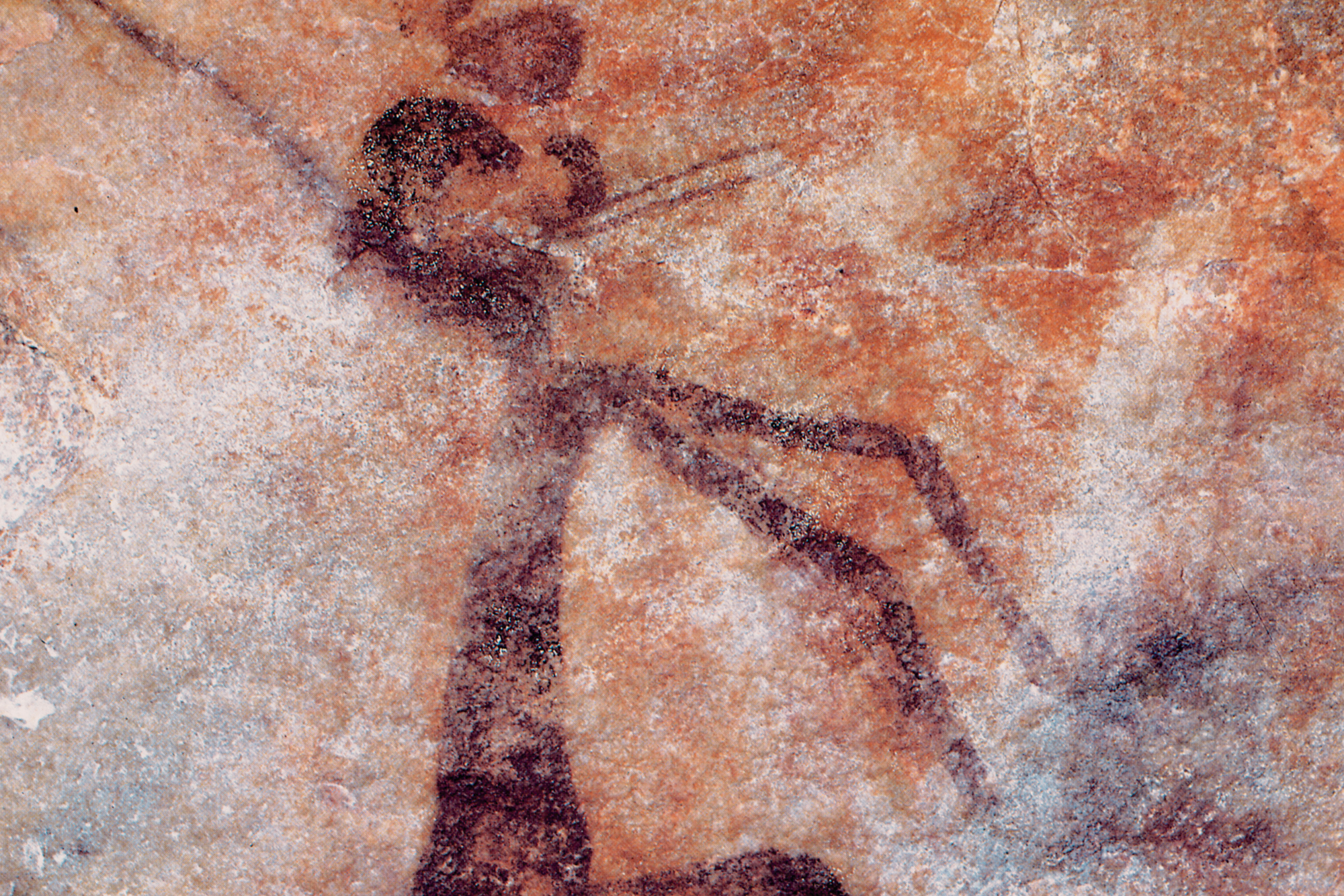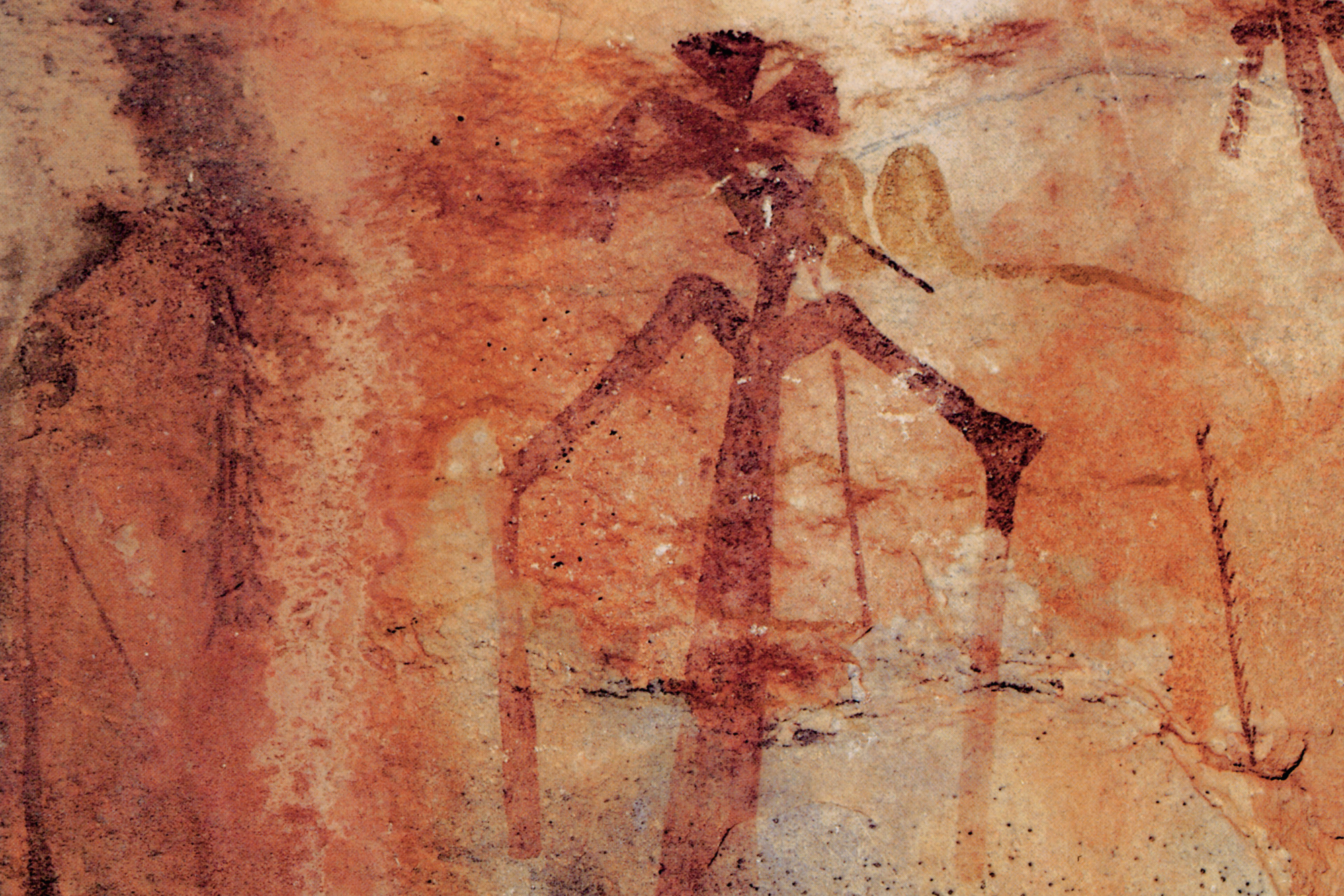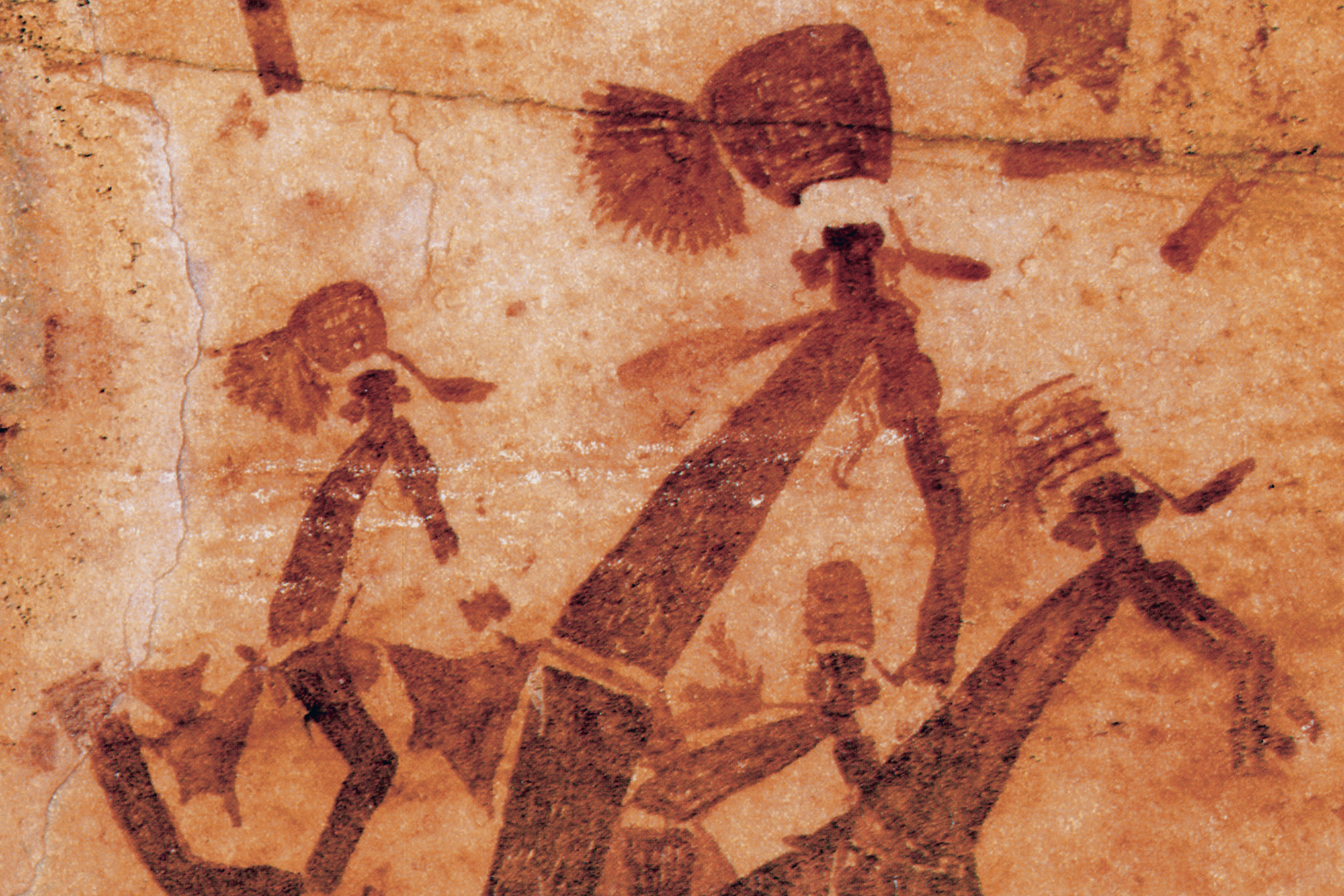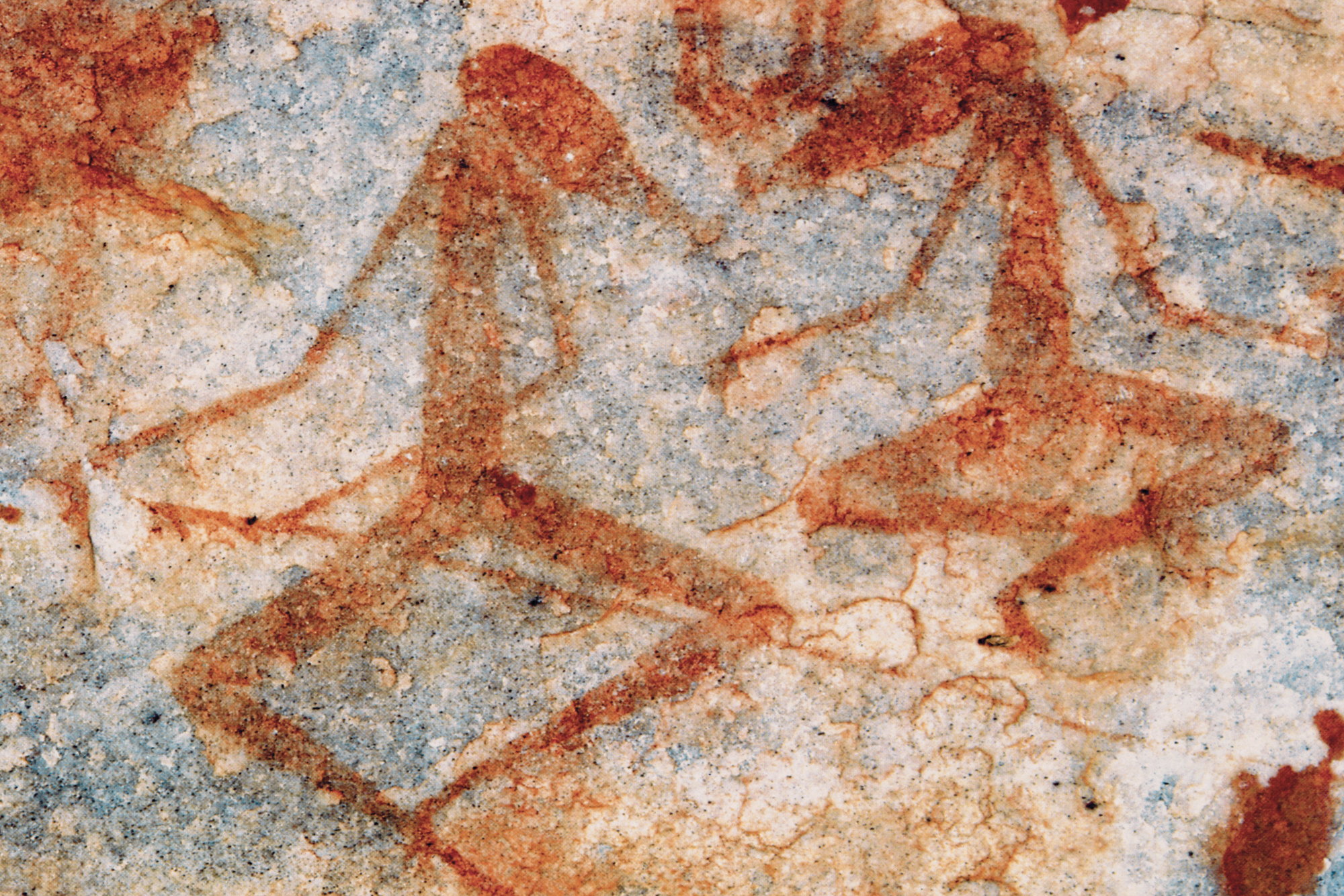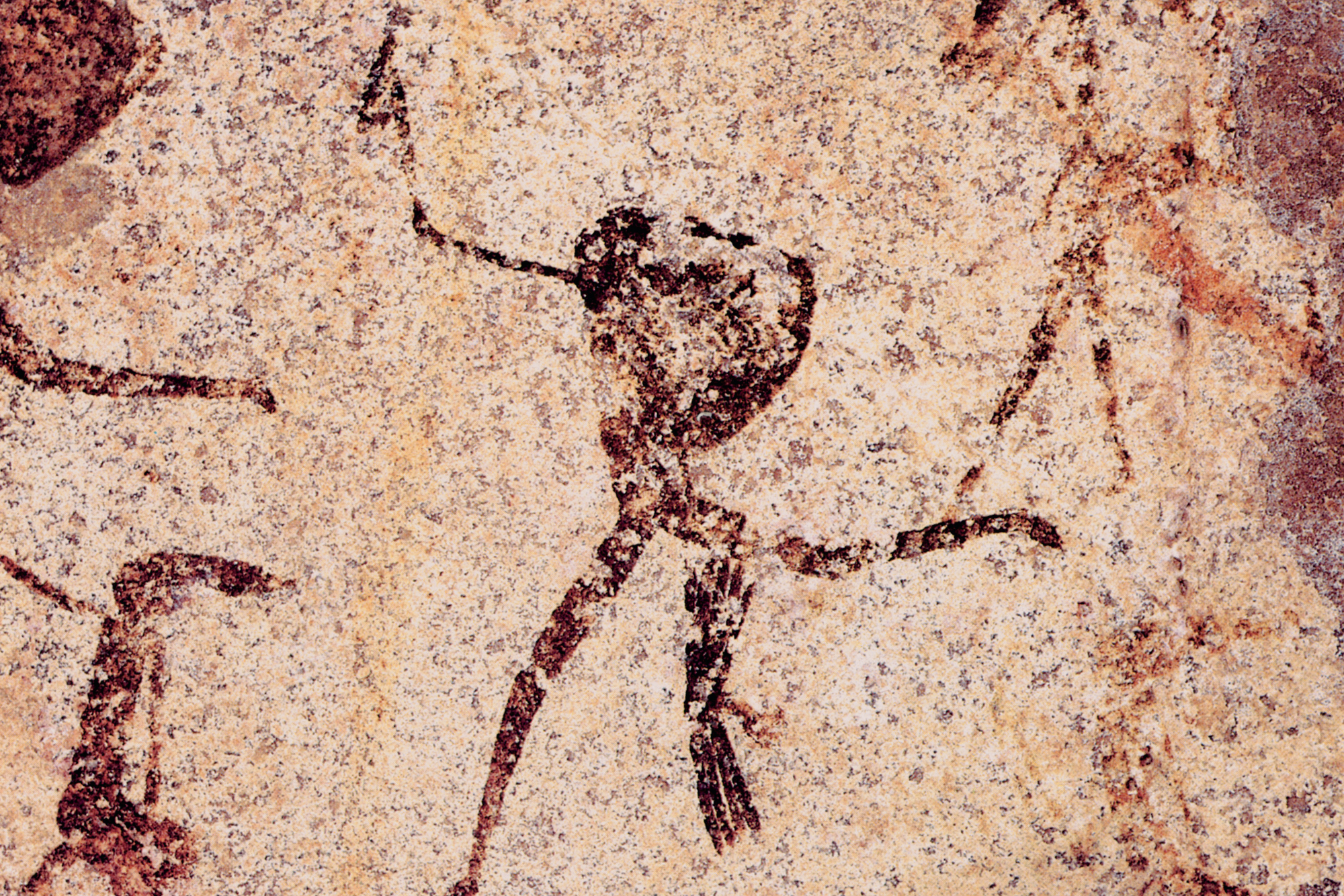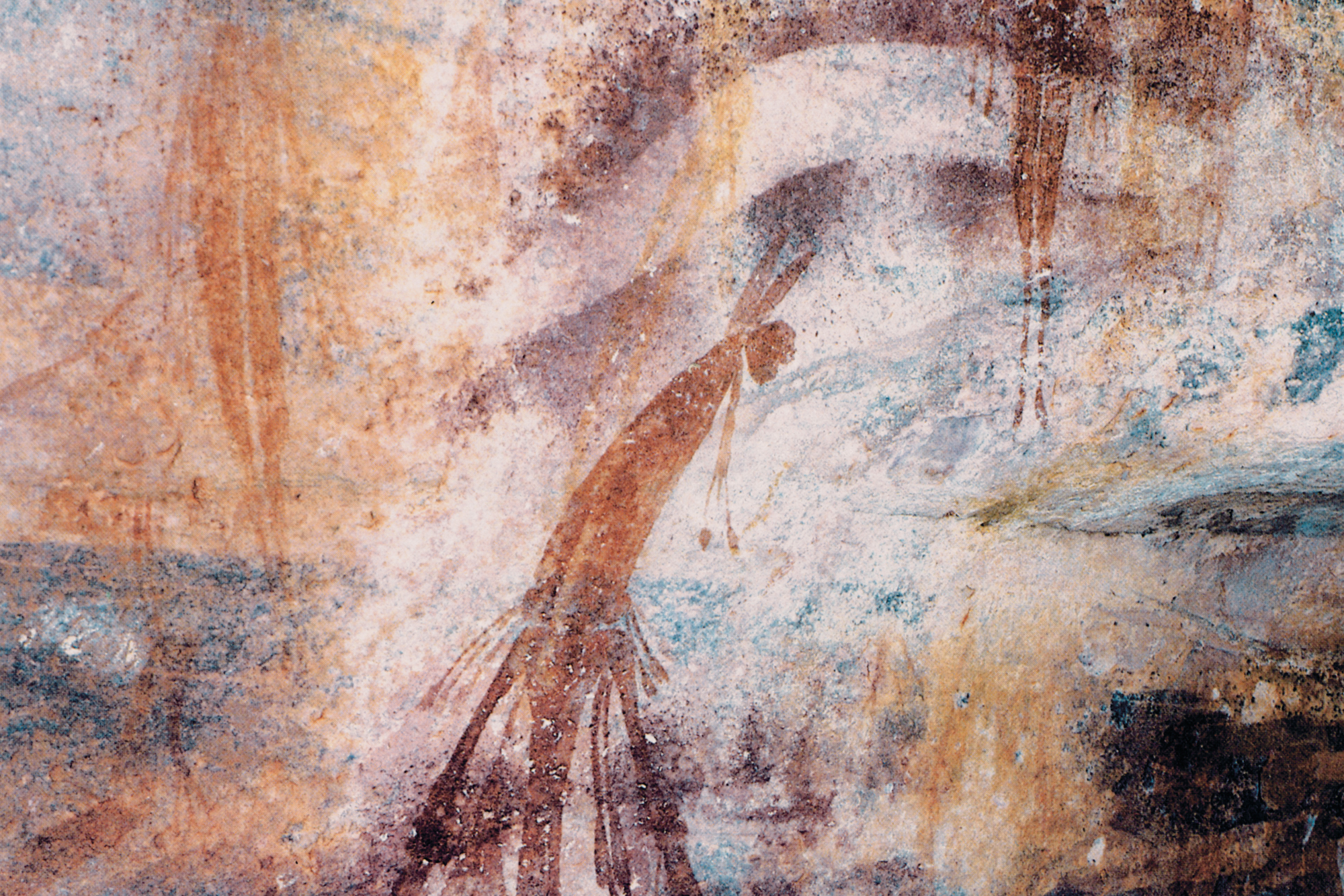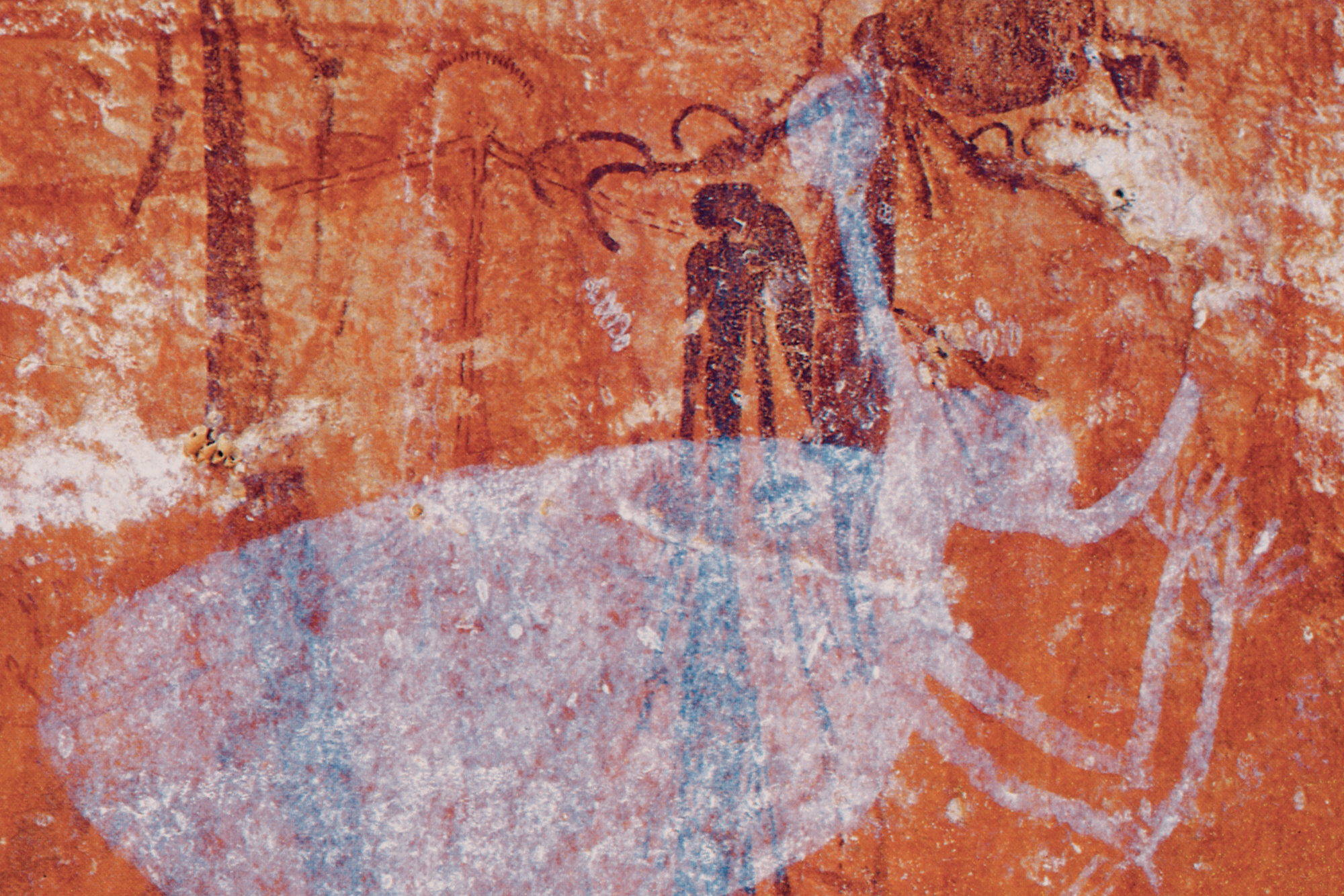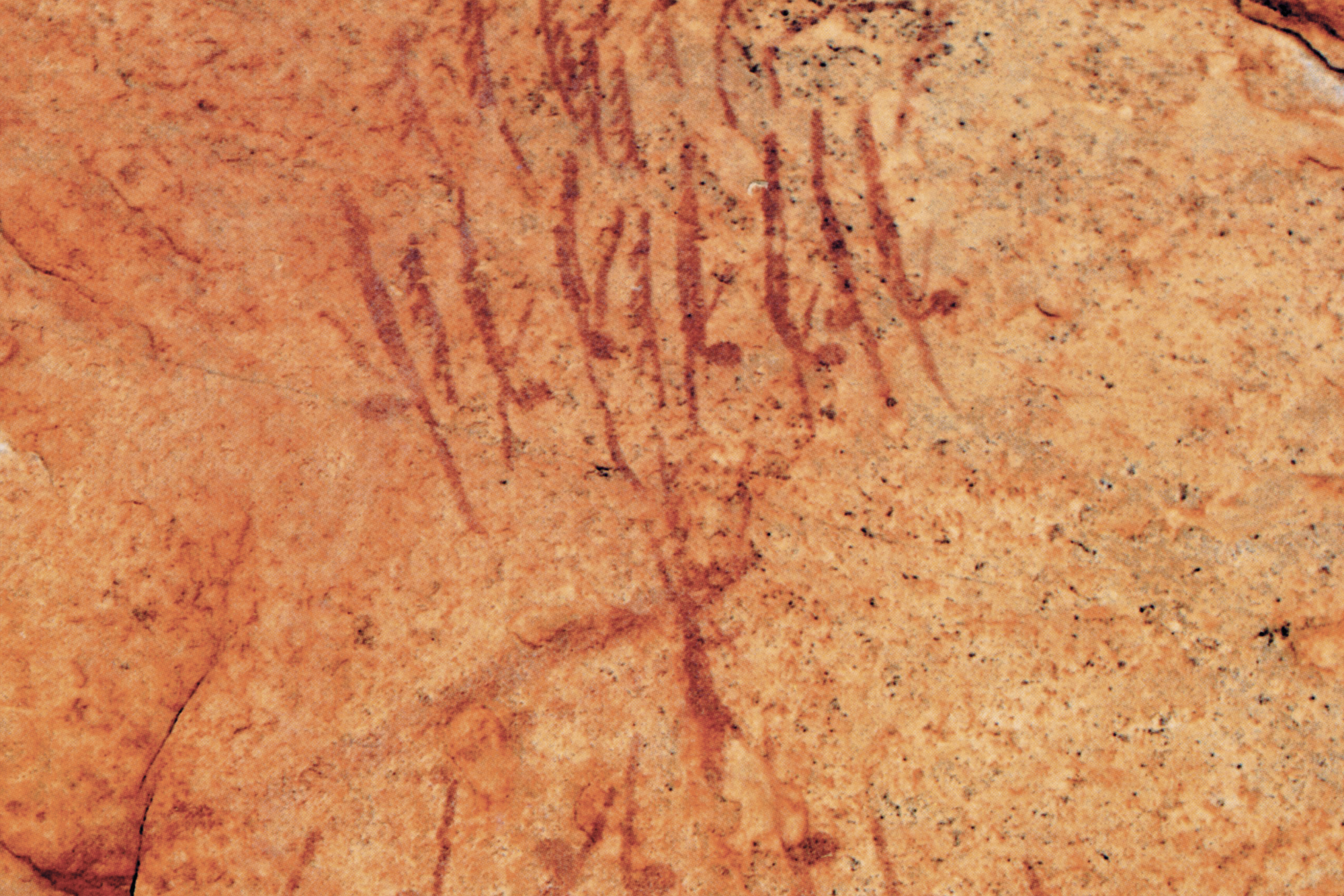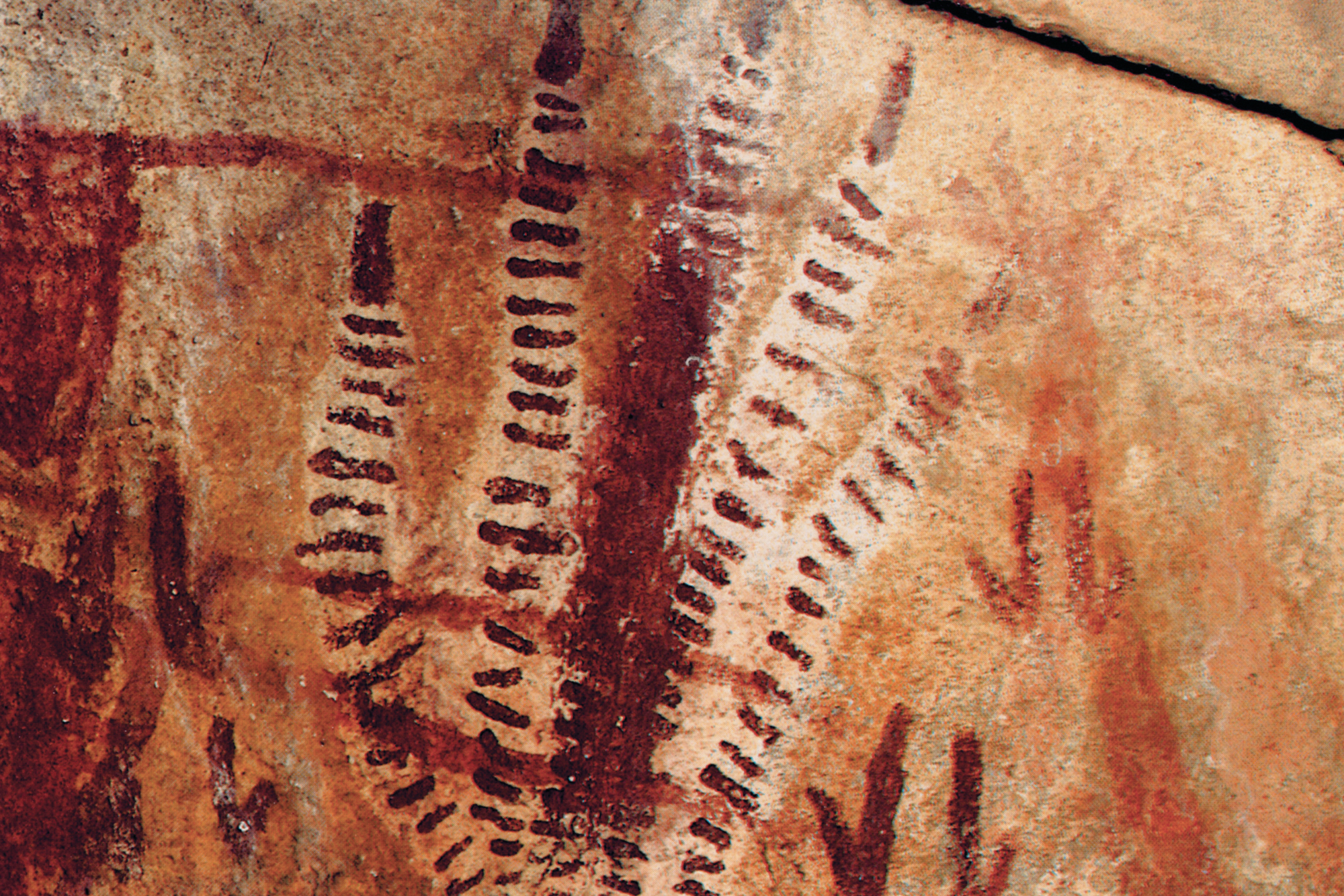



The earliest visible Kimberley rock art paintings are known as 'Naturalistic', followed by the Gwion motifs, formerly known as 'Bradshaws'. Another style is the schematized human forms of the 'Static Polychrome', as well as the Painted Hand motifs. Finally, the Wanjina paintings which depict the spirit ancestors and their representation in anthropomorphic form, forming a continuous Aboriginal tradition dating to the last 4000 years.
Researchers interpret the change in rock art styles in the Kimberley as a response to the social and cultural adaptations triggered by the changing climate and rising sea levels. Paintings of human figures with new technologies such as spear-throwers might show how people adapted their hunting style to the changing environment and the availability of different types of food.

It is thought that the Kimberley region is host to Australia’s oldest known rock paintings, at least 17,300 years old. The region also contains engravings which are thought to be earlier than the paintings, such as the rock art sites on Balanggarra Country in the northeast of the Kimberley.

For the engravings, new research from Rock Art Australia aims to date the engravings. Some of the rocks themselves are covered with natural, glaze-like mineral coatings. These deposits are less than a centimetre thick, yet they have detailed internal structures, featuring alternating light and dark layers of different minerals, and methods have been developed to reliably date the formation of these coatings and provide age brackets for any associated engravings. Moreover, it was also possible to match layers found in samples collected at rock shelters some distance apart; radiocarbon dating suggests these layers were deposited around the same time, showing their formation is not specific to particular rock shelters, but controlled by environmental changes on a regional scale, revealing an understanding the climate and environments in which the artists lived.
→ Subscribe free to the Bradshaw Foundation YouTube Channel
→ Australia Rock Art Index
→ Introduction to the Australia Rock Art Archive
→ Rock Art of the Kimberley
→ Rock Art Australia (RAA)
→ Dating the Rock Art of the Kimberley
→ Australia's Oldest Known Rock Art
→ Film - Griffith University's Laureate
→ ABC Radio National 'Nightlife'
→
Experts rush to map fire-hit rock art
→ The aftermath of fire damage to important rock art at the Baloon Cave tourist destination, Carnarvon Gorge, Queensland, Australia
→ Studying the Source of Dust
→ Rock Art of Western Arnhem Land
→ Australia's Aboriginal People
→ The Kimberley
→ Out in the Back Country - Hugh Brown
→ Bradshaw Foundation
→ Rock Art Network
